







reast cancer researchers and cli nicians have made tremendous progress in reducing death rates in the past three decades, yet a racial gap persists in the United States.
Even with the lower numbers of actual disease compared to white patients, Black women are still much more likely to die from the disease.
The American Cancer Society highlights these disparities in a new



“We found that despite contin ued progress in reducing the risk of death from breast cancer, there is an alarming persistent gap for Black women, who have a 40% higher risk
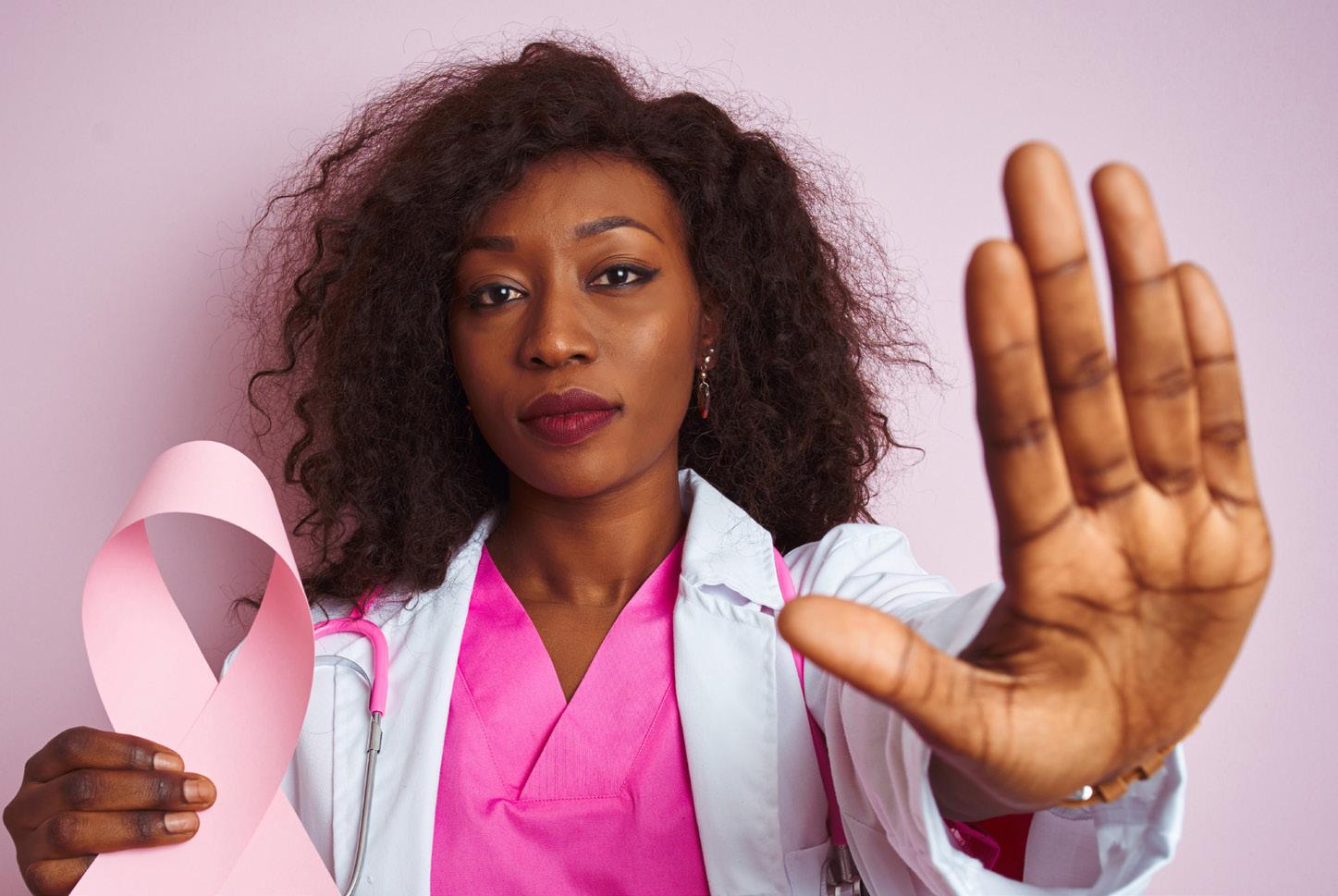
Siegel, senior scientific director of surveillance research at the American Cancer Society.
“We have been reporting this same disparity year after year for a decade. It is time for health systems to take a hard look at how they are caring differently for Black women,” Siegel said in a cancer society news release.
While Black women have 127.8 cancer cases per 100,000, versus white women with 133.7 cases, they have 40% higher death rates, the report says.
likely of any racial or ethnic group to be diagnosed while their breast cancer is at a localized, more easily treated, stage — at 57% versus 68% in white women, researchers found. They also have the lowest five-year survival rate of any racial or ethnic group for all breast cancer subtypes and stages, except stage 1. The largest gaps were between stage 3 and stage 4.
Gaps also exist for American In dian and Alaska Native women, who are 17% less likely to be diagnosed with breast cancer than white wom en, but 4% more likely to die from the disease.
The U.S. death rate from breast cancer dropped by 43% overall between 1989 and 2020, with 460,000 fewer deaths. The cancer society attributed that to earlier detection through screening, increased aware ness and advances in treatment.
That pace of decline has slowed. While death rates dropped about 1.9% annually from 2002 to 2011, they dropped 1.3% annually between 2011 and 2020. That may, in part, reflect increased incidence.
“The slow decline in breast can cer mortality during the most recent period partly reflects stagnant screen ing uptake and suboptimal receipt of timely and high-quality treatment,” said study co-author, physician Ahmedin Jemal, senior vice president of surveillance and health equity science for the cancer society.
Jemal called for coordinated and concerted efforts by policymakers, health care systems and providers to deliver the best breast cancer care to all populations. This includes ex panding Medicaid in the non-expan sion Southern and Midwest states, where Black women are dispropor tionately represented, he said.
“Also, increased investment is needed for improved early detection methods and treatments,” Jemal said in the release.
dying from
cancer than white
lower inci dence.
is not
it is not
Moreover, for every 19.7 white women per 100,000 who die of breast cancer, 27.6 per 100,000 Black women will die. Among women younger than 50, the death rate is twice as high for Black patients.
Black women remain the least
Advocates called on lawmakers to provide funding for the National Breast and Cervical Cancer Early Detection Program, a program jointly funded by federal and state govern ments that helps improve access to lifesaving breast and cervical cancer screenings.








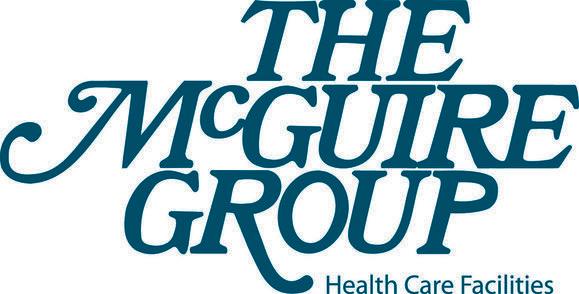

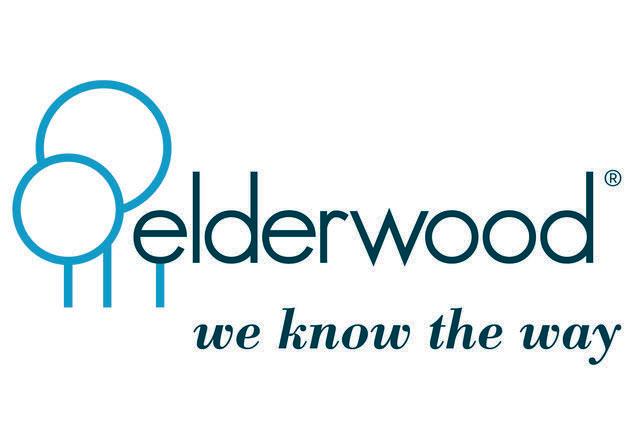
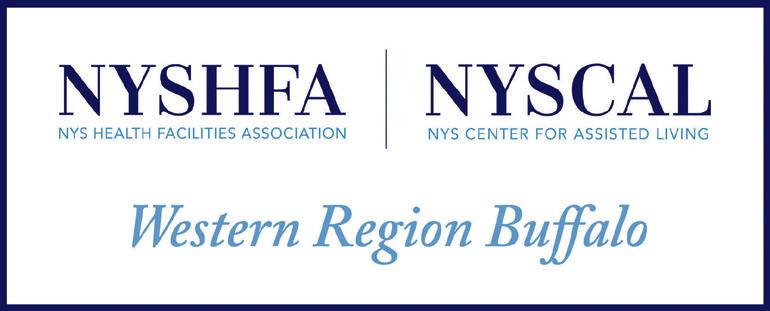


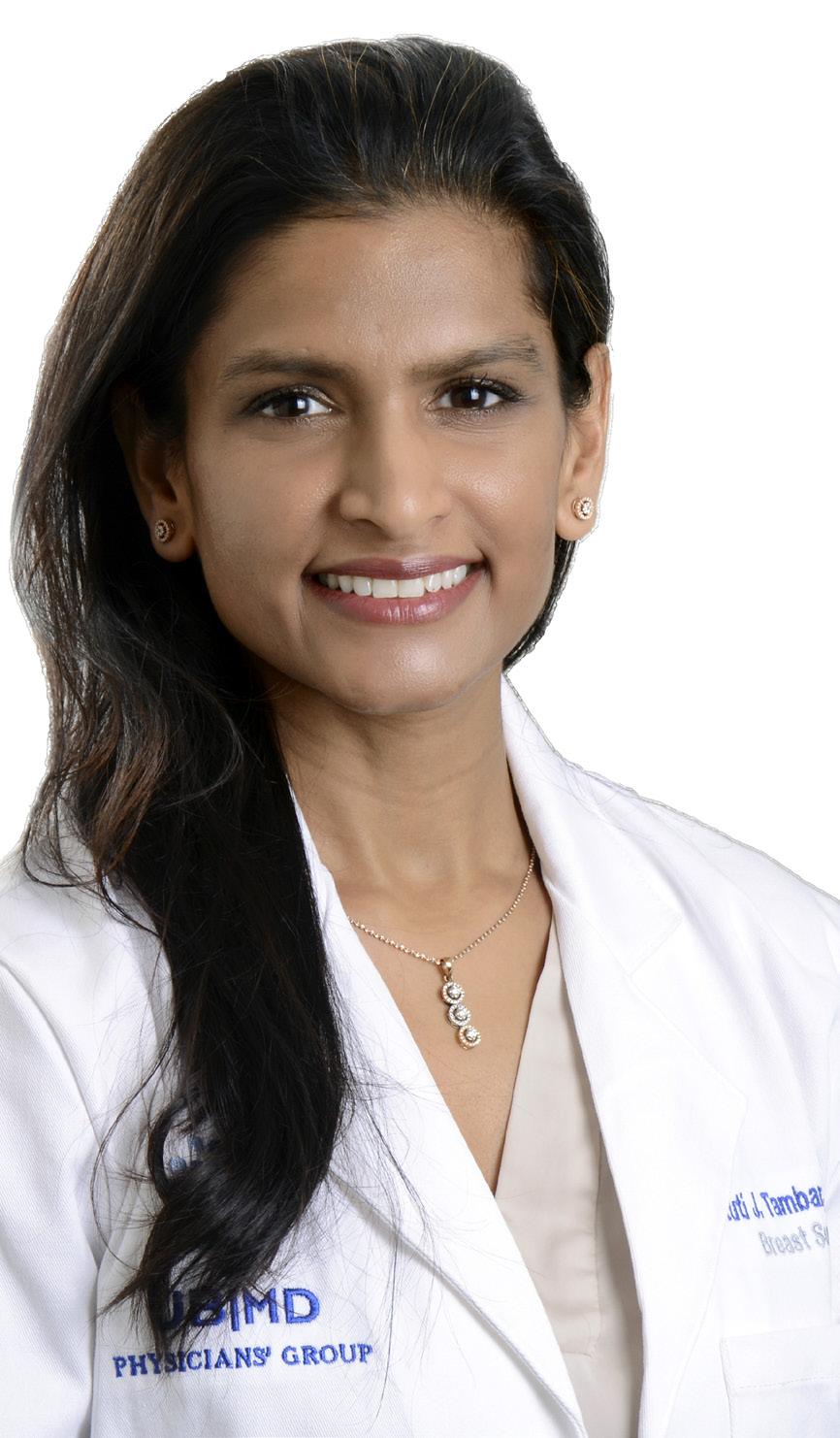

Couric shared that informa tion late September on Insta gram, while also releasing an essay about the experience on her media website.
“Every two minutes, a woman is diagnosed with breast cancer in the United States,” Couric wrote on Instagram. “On June 21st, I became one of them.”
Couric, 65, received her cancer diagnosis in June, had a lumpectomy on July 14 at NewYork-Presbyterian/Weill Cornell Medical Center and then began radiation treatments on Sept. 7, TODAY.com reported.
The anchor’s name is often associated with cancer aware ness because her first husband, Jay Monahan, died from colon cancer at 42, when their children were young. Couric has long been a spokeswoman for getting colonoscopies to catch cancer early.
Couric wrote about sharing her cancer news with her daugh ters, Ellie, now 31, and Carrie, 26.
“Finally, four days after I was diagnosed, I FaceTimed each of them,” she wrote. “I tried to be as reassuring as Dr. Newman. Their faces froze in disbelief. Then shock. Then they began to cry. ‘Don’t worry,’ I told Carrie then Ellie, ‘I’m going to be fine,’ trying to convince myself as well as them.”
“They’d already lost one parent. The idea of losing an other was unfathomable,” she wrote.
Although Couric’s family has no history of breast cancer, the family has endured many cancer diagnoses and deaths. In addition to Monahan, Couric’s sister died at age 54 from pan creatic cancer. Her mother-inlaw died from ovarian cancer. Her parents also have a cancer history.
“Please get your annual mammogram,” she wrote. “I was six months late this time. I shudder to think what might have happened if I had put it off longer. But just as importantly, please find out if you need addi tional screening.”
Q: You’re a breast surgeon who deals with both cancer and non-cancer surgeries.
A: Yes, we call it benign and ma lignant disease of the breast.
Q: What kinds of conditions fall under the benign category?
A: That includes things like abscess, nipple discharges, fibroade noma.
Q: What are the most common malignant diseases you operate on?
A: For cancer, we see breast cancer that is either early stage or locally advanced. We treat it with a multi-modality approach. There’s surgery, there’s radiation, there’s medications that we use to treat the breast cancer and reduce the chances of it coming back later.
Q: How effective is surgery at treating these conditions?
A: Surgery is very effective. It’s the primary treatment modality for all breast cancers. Sometimes chemo is involved and given first, but sur gery is shown to be most effective at dealing with the bulk of a breast can cer tumor. It’s highly effective at cur ing breast cancer, but standalone it’s generally not sufficient. It’s usually done alongside chemo or radiation, or some kind of medication. Surgery alone generally is not enough.
Q: What stage are breast cancers typi cally detected at?
A: Typically they’re detected at stage 1, which is the earliest stage cancer can be detected. It can be locally advanced, meaning that it’s progressed from the breast to the lymph nodes, which is still curable. But if it’s progressed beyond the lymph nodes to other organs it be comes stage 4 and no longer curable. But with advanced palliative treat ment, even those women are living longer despite having a metastatic breast cancer.
Q: To what degree did the pan demic affect breast screenings?
A: The major impact of the pandemic for us was the delays in screenings because everything was put on pause while the authorities dealt with what to do with the pan demic. So it led to delayed detection of cancer that wasn’t apparent. But the other side of it was that women had complaints of breast cancer; their treatment was delayed either by them not following up in a timely fashion, or because everything was slow because of the pandemic. So that was a dual problem. We had a delay in detection and a delay in beginning treatment.
Q: What got you interested in breast surgery?
A: I wanted to work in women’s health. That was the reason I went to medical school. I wanted to make a difference in women’s health. I originally wanted to be an OB-GYN, but when I did surgery I felt like I was making a major impact in a pa tient’s life with a single intervention. That idea was very attractive to me. So I decided to go into surgery, but I felt like I was losing that focus on women’s health. So when I started doing breast surgery in my train ing, I realized I could go back to my original goal of focusing on women’s health. So breast surgery allowed me to advocate for women and make a difference in their health.
Q: What do recovery times generally look like for breast surgery?

A: Breast surgery recov ery can be anywhere from two days to a month depend ing on the extent of inter vention. Small interventions like taking out small tumors might take two to five days at the most. Anyone having a major reconstruction after having a breast removed? That could be around a month of recovery time.
Q: Are these procedures done minimally invasively or robotically at this point? Or are they mostly open surgeries?
A: It’s more or less open at this point. There are no minimally inva sive or robotic methods at this time, but we do use a hidden scar tech nique. That’s where we place a scar so that it’s not apparent to women. It’s hidden in the arm pit, in the breast line at the bottom of the breast, around the nipple so it’s not as apparent. Women do associate their sexuality and body image with their breast, so having a permanent scar there is very distressing and having it placed in a non aesthetic position can certainly make it worse. That’s anoth er reason we do oncoplasty for these patients, because we’re pretty much rearranging their breast tissue to maintain the contour of their breasts. So we try to achieve the aesthetic outcome they’re looking for despite having breast cancer. So it’s not a continuous reminder every day that they had breast cancer. So in addition to the interventions I do, I work in conjunction with plastic surgeons to do reconstructions, breast reductions at the same time so that there’s not a constant reminder that they went through a procedure with permanent disfigurement.
Q: Under what conditions is recon structive surgery suggested?
A: All forms of reconstruction are completely the patient’s choice. There’s no scenario where it’s re quired or strongly recommended. We offer it to all women equally, from my 25-year-old patients to my 85-year-old ones. Of course, you’ll see more 23-year-olds who take you up on it than 70-year-olds. The oldest patient I’ve reconstructed it was 82. I’ve offered it to a patient who was 92. I don’t think there’s an age where I’d stop, but some populations are definitely more interested than others.
Q: I understand you’re also a law student, right?
A: That’s something I’ve been passionate about for a long time but just haven’t had the time, not that I have the time now. It’s for advo cacy, women’s advocacy, physician advocacy, patient advocacy. There’s a medical law group here in town that I work with with my current patients that fights some legal battles for my patients with insurance companies. So that’s something I’m interested in.
Name: Stuti Tambar, M.D.
Position: Breast surgeon at UBMD
Career: Served as a breast surgeon and director of the Breast Center in Central California for several years, before returning home to Western New York
Hometown: Delhi, India
Education: University at Buffalo Medical School; Georgetown University, Washington DC
Affiliations: Kaleida Health System, Buffalo General; Millard Fillmore
Suburban Hospital
Organizations: American College of Surgeons; American Society of Breast Surgeons
Expertise: Benign and malignant breast disease, breast ultrasound, nipple sparing and skin sparing mastectomy, oncoplasty Family: Husband, three children
Hobbies: Running, cooking, dancing
Physician always wanted to make a difference in women’s health — as a breast surgeon and as a lawyer she does just thatFormer TV newswoman and TODAY show anchor Katie Couric has breast cancer.
“Patients want to make sure that they are getting the best treatment that they can get anywhere. At Roswell Park, we are at the forefront of new cancer therapies. They know, with full confidence, they are getting the best cancer care available.”
Please visit JustOneDayWithUs.org or call 1-800-ROSWELL (767-9355) Kim Sweeney and her team are here to assist.
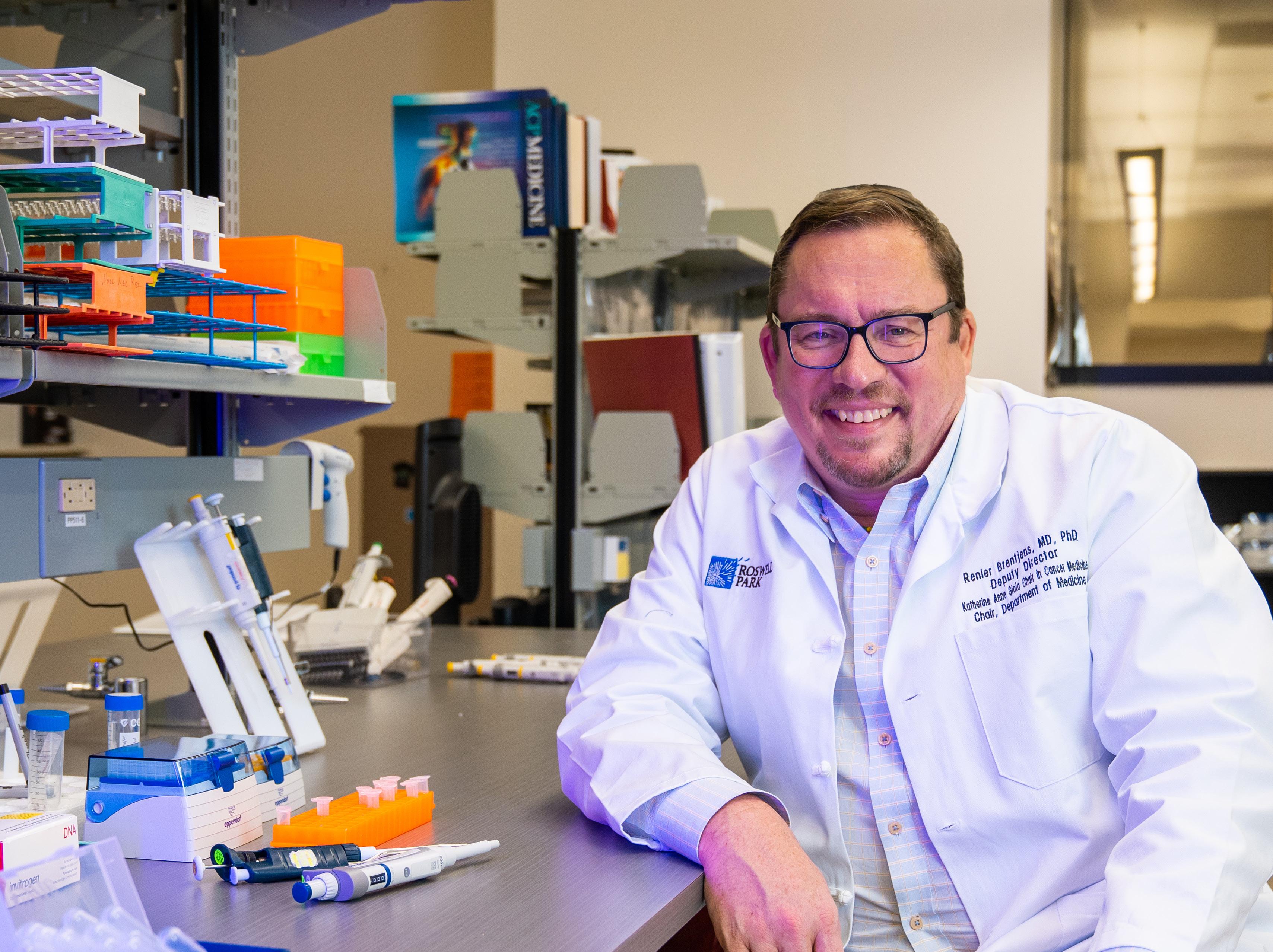
– Renier Brentjens, MD, PhD Deputy Director
With the growing popularity of electric scooters, the num ber of kids injured while riding them has jumped dramatically, a new study finds.
Moreover, those injuries have become more severe: In the past decade, the number of patients ad mitted to hospitals after an e-scooter accident rose from one in 20 to one in eight.
The findings beg the question of whether young kids should be using e-scooters at all.
Often regulations about their use are left up to local areas and, in many places, no regulations exist and no training on their use is required, the investigators said.
“The regulations surrounding the use of these scooters vary widely across the country,” said lead re
searcher, physician Harrison Hay ward, an emergency medicine fellow at Children’s National Hospital in Washington, D.C.
According to the American Acad emy of Pediatrics, children under 16 should not operate or ride on e-scoot ers. Yet, the average age of patients in this study was 11.
For the study, Hayward’s team collected data on nearly 1,500 e-scooter injuries reported to a na tional database of pediatric injuries from 100 hospitals. The investigators found that over 10% of the patients had a head injury, including concus sions, skull fractures and internal bleeding. Broken arms were the most common injury (27%), followed by minor abrasions (22%) and lacera tions that needed stitches (17%).
The number of patients admitted
to a hospital jumped from just over 4% in 2011 to nearly 13% in 2020, the researchers noted.
Hayward added that the majority of e-scooter crashes involve running into an object, like a lamppost or hitting a pothole or a pedestrian. But collisions with cars have also been reported, he said.
Often, the youngest kids injured are riding the scooter with an adult, Hayward noted. “We did a study where we looked for levels of injuries among 4-year-olds,” he said. “For a pretty surprising proportion, they were actually on the scooter with another older person.”
Hayward said that only one per son should be riding the scooter and they should be wearing a helmet and traveling in a bicycle lane.
Pam Shadel Fischer, senior di rector of external engagement at the Governors Highway Safety Asso ciation, said that “anybody who’s too young to have a driver’s license should not operate or ride on an elec tric or motorized scooter.”
Helmets are essential when
riding a scooter, she added. “I don’t disagree with those who say, helmets don’t cause crashes,” she said. “But lack of helmets definitely causes some of the injuries that people sustain.”
These scooters were not designed to be ridden on sidewalks, but rather on bike paths and roads. In many places, regulations require that these scooters not be used on sidewalks, Shadel Fischer said.
She believes that state legisla tures need to regulate the use of these scooters by setting age limits and putting them in the same class of transportation as bicycles.
It’s also up to parents to ensure that their young kids aren’t using e-scooters.
The findings were presented in October at the American Academy of Pediatrics annual meeting in Ana heim, California. Findings presented at medical meetings are considered preliminary until published in a peer-reviewed journal.
Last year, we spent $603 billion on drugs. That’s about $1,800 per person in the US. Half of the $603 billion was spent on spe cialty drugs alone. Soaring prices, not increased utilization, drove up the overall drug spending. Specialty drug prices have increased a staggering 43% over the last five years. To reign in drug costs, the Inflation Reduction Act caps all Medicare Part D drug price increases at the inflation rate and out-ofpocket spending for Medi care members is limited to $2,000 annually. This went
The 88 Catholic hospital system lost $1.4 billion in the fiscal year just ended June 30.
St. Joseph’s in Syracuse and St. Peter’s in Albany are local members. Two other national Catholic hospital systems, CommonSpirit and Ascen sion (Lourdes in Binghamton), lost almost $2 billion each. Deficits were attributable to declining revenues and significant contract labor (mostly nursing) costs. In fairness to hospi tals, their fees are either predeter mined by Medicare and Medicaid or predetermined with commercial insurers. So, unlike drug manufac turers, they cannot arbitrarily raise prices to increase revenues.
Large national hospital systems have not fared much better than smaller local or regional hospital systems. Industry observers have speculated that the smaller systems (comprised of “across the street mergers”) may be more efficient because their proximity allows them to share clinical staff, consolidate overhead, and merge departments.
Industry experts Kaufman and Hall don’t see things improving for hospitals through next year. If hospi tals continue to lose money, they will
into effect Oct. 1, 2022. In addition, Medicare will finally be allowed to negotiate a handful of drug prices — but not until 2026. Seemingly in an ticipation of prices being controlled by Medicare, drug manufacturers increased the prices of some 1,200 products an average 31.6% from July 2021 to July 2022. In the meantime, physicians are lobbying Con gress not to cut their payments by almost 5% next year. With inflation at 8%, the 5% cut is tantamount to a 13% decrease in reimburse ment.
be forced to make painful staff cuts, mostly in non-clinical areas, to keep their doors open.
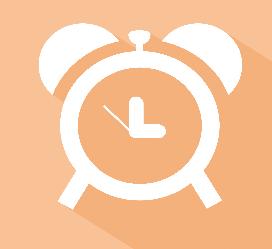
You are eligible for Medicare the month you turn 65. Open enrollment, which began this Oct. 15, allows peo ple to change their plan for 2023.
Medicare anticipates the trend to enroll in Advantage plans will continue with 32 million seniors, or more than half of all eligible seniors, enrolling. Advantage plans are oper ated by commercial carries like Unit ed, Humana, Aetna, Blues, Cigna and Anthem. As the popularity of Advan tage plans grows, so do the markets served by the carriers. These plans offer more services than traditional Medicare, often for no additional cost, such as dental, vision, hearing, transportation and even meals.
Incredibly, Advantage Plan premiums are expected to decrease 8% in 2023. Open enrollment for the Affordable Care Act and most employer plans began Nov. 1. The Kaiser Family Foundation estimates ACA premiums will increase 10% and commercial-employer premiums about 7%.
Prior to the pandemic, 11% of adults suffered from depression and anxiety. Since the pandemic, it is up to 40% of adults.
As the stigmatization associated with mental health declines, more and more people are seeking treat ment. But therapists are struggling to keep pace and meet the demand.
Adding to the problem, since 2011, the number of practicing psychiatrists (MDs) has declined 6%. Most don’t accept Medicare and many don’t accept any insurance. Psychiatric nurse practitioners are increasingly critical in providing mental health services. Their num bers have increased 162% since 2011. Since then, NPs have provided 30% of all mental health visits. Start-up companies are assisting these NPs with establishing and running their private practices by lowering over head and billing costs and contract ing with both Medicare and commer cial insurers.
Consumer surveys reveal 70% of respondents worry about their men tal health coverage. Many plans still restrict coverage or have expensive copays.
A survey of 8,000 adults by the Commonwealth Fund revealed insurance does not provide enough financial protection against rising healthcare costs.
43% of those surveyed were inadequately covered and 9% had no coverage. 29% of those with employ er sponsored insurance and 43% of those with individual insurance were underinsured because of high outof-pocket expenses like deductibles and copays. Underinsured is defined as spending more than 10% of your income on out-of-pocket costs. 50% of those surveyed said they could not pay an unexpected medical bill of $1,000 within 30 days. Pollsters West
Health Gallup asked 5,000 adults to grade US healthcare for affordability, equity, accessibility, and quality. 44% of respondents graded US healthcare “F” and 33% graded it “D.” Only 22% of those taking the poll rated US healthcare either “A” or “B.”
Virtual care was growing VERY slowly in the several years prior to the pandemic.
The technology was there, but the acceptance by both providers and consumers was not.
The pandemic caused virtual care, by necessity, to rapidly prolif erate. It is now widely accepted by insurers, providers and consumers and it is integral to healthcare access and delivery.
The Massachusetts Blues have teamed up with the Carbon and Fire fly healthcare systems to offer their members virtual primary and mental health care by early 2023. The Blues are touting better outcomes, easier access, lower costs, less anxiety and improved outcomes. There will be no copays. You will be able to access your provider via laptop, desktop or phone. In addition to no commuting, waiting times will be minimal. There will be wellness coaching and sup port and specialists will be engaged, as necessary. The Blues will also provide free medical devices, such as blood pressure monitoring, to its members. United Healthcare, Aetna and Cigna are all considering similar products.
George W. Chapman is a healthcare busi ness consultant who works exclusively with physicians, hos pitals and healthcare organizations. He op erates GW Chapman Consulting based in Syracuse. Email him at gwc@gwchapman consulting.com.
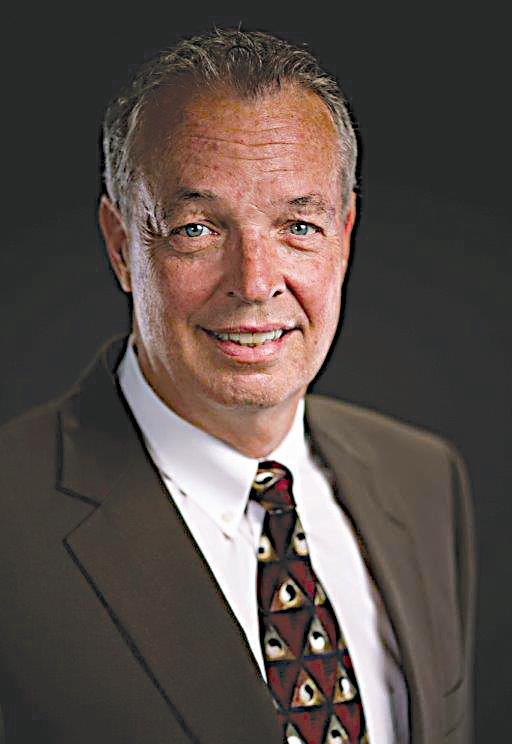
continues at con cerning levels, U.S. health offi cials reported in October.
About 2.5 million middle school and high school students reported that they had vaped in the past 30 days in 2022, according to new data from the U.S. Centers for Disease Control and Prevention and the U.S. Food and Drug Administration.
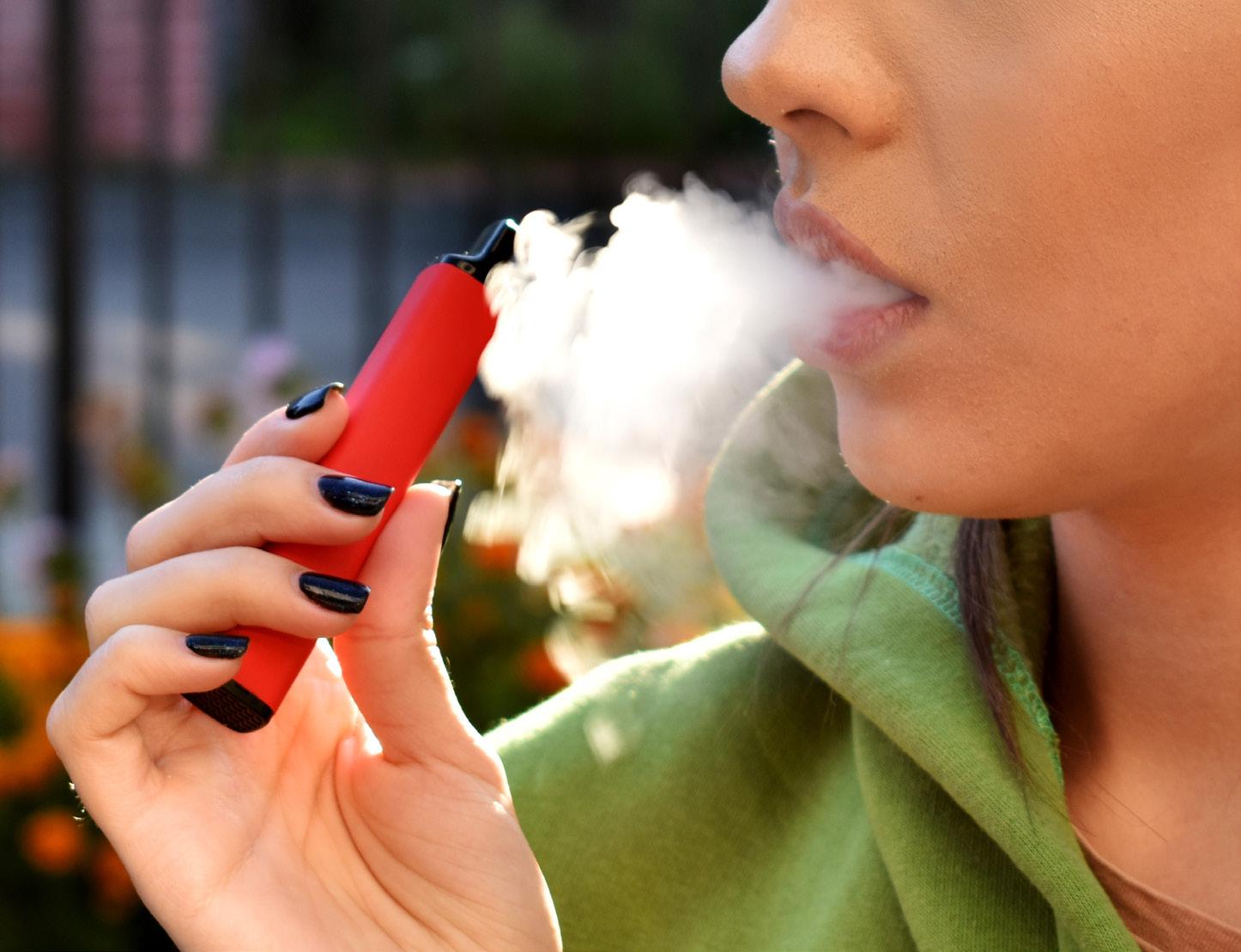
was 14.1% of high school students and 3.3% of those in middle school.
“This study shows that our nation’s youth continue to be enticed and hooked by an expanding variety of e-cigarette brands delivering fla vored nicotine,” said Deirdre Law rence Kittner, director of the CDC’s Office on Smoking and Health.


“Our work is far from over,” Kittner said in a CDC news release. “It’s critical that we work together to prevent youth from starting to use any tobacco product — including e-cigarettes — and help all youth who do use them to quit.”
The findings are from the Nation al Youth Tobacco Survey, conducted among U.S. students in 6th through 12th grades between Jan. 18 and May 31. They were published Oct. 6 in the CDC publication Morbidity and Mortality Weekly Report.

Among the youth who vape,
about 85% used flavored e-cigarettes. The brands they used were Puff Bar, with 14.5% calling it their usual brand, Vuse at 12.5%, Hyde at 5.5% and SMOK at 4%. More than half used disposable e-cigarettes. Most used flavors were fruit at 69.1%, can dy or desserts at 38.3%, mint at 29.4% and menthol at 26.6%.
About 27.6% of youth who vape did so daily. About 42.3% vaped on 20 or more of the past 30 days.
E-cigarettes contain nicotine, which is addictive and can harm the developing adolescent brain, the CDC said. It may also increase risk for future addiction to other drugs. E-cigarettes have been the most pop ular tobacco product for U.S. youths since 2014.
“Adolescent e-cigarette use in the United States remains at concerning levels, and poses a serious public health risk to our nation’s youth,” said Brian King, director of the FDA’s Center for Tobacco Products.
“Together with the CDC, protect ing our nation’s youth from the dan gers of tobacco products — including e-cigarettes — remains among the FDA’s highest priorities, and we are committed to combatting this issue with the breadth of our regulatory authorities,” he said in the release.
If you are facing Thanksgiving alone for the first time, you may be anticipating a lonely and de pressing fourth Thursday of Novem ber.
But it doesn’t have to be so.
Whether you’re divorced, wid owed or just can’t make it home for Thanksgiving, this family-centered holiday can be an opportunity for personal growth and expression. Plus some fun, too!
Below are some tips and creative ways to manage and embrace what can be a challenging day in the life of those alone this time of year.
• Be thankful — And why not start with yourself? Consider making a list of all the things you are thank ful for this year: Your health? Your children? Good friends who have stood by you through thick and thin? A career or volunteer job you love? A beloved pet? Or perhaps even this opportunity now to experiment and learn new things about yourself?
• Take the long view — While you may be alone this year, it doesn’t mean you’ll be dining solo on left over turkey the rest of your life. This one day doesn’t dictate your destiny.
Who knows what the future holds? Over the next year, you may meet someone special or achieve a measure of inner peace and confi dence that enables you to enjoy a hol iday on your own or with a “family of friends.”
• Do good — Helping others this time of year can take your mind off
being alone and give you something worthwhile to do. Shel ters and food kitchens often welcome vol unteers, but, truth is, many of these agen cies fill up fast with regular volunteers. You may need to plan and be creative.
As an alternative, many local YMCAs host Turkey Trots and need volunteers to register and cheer on runners of all ages. Instead of serving stuffing at the shelter, you could be serving up smiles at the finish line.
• Throw your own little holiday dinner for fellow “strays” or “untethered” friends — Have some fun! It doesn’t need to be elaborate or even planned far in advance. Sometimes last-min ute dinner invitations can turn into the best, most memorable get-togeth ers.
Chances are you know others who may be alone this Thanksgiving. Extend a warm invitation and invite your guests to bring along a beverage or holiday side-dish to pass. This gives everyone a chance to make a meaningful (and delicious!) contri bution.
• Beware of “euphoric recall” — When you are feeling lonely, it can
be easy to glorify the past. Did last year’s Thanksgiving live up to the Norman Rockwell ideal? Or did all the bickering, bad blood, and woo zy, overstuffed relatives make you want to run for the hills? Maybe, just maybe, being with your own good company is a blessing.
• Rent a movie and indulge in a tasty guilty pleasure — Oh, why not? Rent a favorite “feel good” film and make a night of it. You might check out “Tootsie” or “On Golden Pond,” two of my favorite oldies, which never fail to warm my heart.

Or find a new movie you haven’t seen and enjoy the novelty of seeing something for the first time. Top it off with a favorite treat. I love every thing pumpkin this time of year: pumpkin soup, pie, ice cream and fry cakes!
• Pick up the phone — I’ve mod ified one of Abe Lincoln’s famous quotes for my own purposes: "Folks are usually about as lonely as they make up their minds to be." The difference between isolation and engagement can be as simple as sending a text or dialing a seven-dig it phone number.
My experience happily tells me that most folks welcome a call on Thanksgiving. Why not pick up the phone to connect with out-of-town friends and family members? Catch up and make their day, as well as yours, a little richer.
Or connect locally with a neigh bor or friend with an invitation to go for a walk around the block or see a matinee while the turkey is in the oven. Many folks welcome the diversion and chance to get out of the kitchen before or after the big feast.
• Decorate your home inside and out. — Do it for you. It may help put you in the spirit of the holiday. This past weekend, I recreated my annual stacked-pumpkin display for my front porch. It gives me a warm feel ing every time I pull up to the house.
Add harvest accents to your
home and feel the essence of Thanks giving in your heart.
• Nurture yourself — On your own, Thanksgiving can be a great day to do whatever you enjoy doing. Carve out well-deserved time to read, do some early online shopping for the holidays, give yourself a man icure or whatever tickles your fancy.
On Thanksgiving Day, I plan to nurture myself with a solo walk in the woods, where I find peace and feel connected to all living things: trees, birds, critters and insects — even creatures I can’t see within the ponds, underground and in the sky.
I never feel alone when I’m in na ture and use the time alone to count my blessings and be grateful.
So pamper yourself for at least 30 minutes and take a mini-vacation from your worries, doubts and fears. Then seize the day with a renewed outlook on life.
• Write “thank you” notes — Now here’s an idea that’s so obvious it of ten gets overlooked on Thanksgiving. “Build bridges the rest of the year, and cross them during the holidays,” said Craig Ellison, PhD, author of “Saying Goodbye to Loneliness and Finding Intimacy.” If you can’t be with friends or family this holiday, pick up a pen and thank them for their support and friendship.
Who wouldn’t love to receive a hand-written card after Thanksgiv ing that begins, “I’m sitting here on Thanksgiving morning thinking of you. On this day of thanks, I can’t help but be thankful for our (fill in the blank).”
In preparation for this kind gesture, purchase cards and stamps in advance.
There you have it: Survival tips for a single-serving Turkey Day. The good news? It will be Friday before you know it and you can look back and be proud of yourself for rising to the occasion and treating yourself to big helping of joy and gratitude this Thanksgiving.
Playing sports can benefit children in many ways, but all sports are not equal when it comes to their bones.
New research suggests children will have healthier bones if they participate in multidirectional sports such as soccer or basketball, rather than unidirectional activities such as running.

Mixing it up a bit with a variety of sports instead of focusing on just one is also less likely to lead to over use injuries, the researchers noted.
“Our data shows that playing multidirectional sports when young er versus specializing in one sport, such as running, decreased a per
son’s bone injury risk by developing a bigger, stronger skeleton,” said study author Stuart Warden. He is associate dean of research and pro fessor of health and human sciences at Indiana University-Purdue Uni versity Indianapolis.
“There is a common mispercep tion that kids need to specialize in a single sport to succeed at higher levels,” Warden said. “However, recent data indicate that athletes who specialize at a young age are at a greater risk of an overuse injury and are less likely to progress to higher levels of competition.”
While researchers have tra ditionally looked at bone mass to
determine skeleton health, previous studies by Warden’s team have found that bone mass and size are equally important.
For this study, they used high-resolution imaging to examine bones in the shins and feet of women who compete in college cross-coun try running. These athletes often suffer bone stress injuries, such as stress fractures.
The investigators found that the women who participated in both running and multidirectional sports when younger had 10% to 20% great er bone strength compared to their counterparts who only ran.
In addition, those who had played sports like soccer or basket ball when younger had better bone structure and strength than those who solely ran, swam or cycled, the scans revealed.
“We want to ensure people have better, stronger bones as they grow, become adolescents and go through life,” Warden said in a university news release. “Specializing in one sport at too young of an age means they are more likely to get injured and not make it at the collegiate and professional levels.”
Athletes should be given time to allow for proper growth and devel opment, not specializing until at least their freshman year of high school, Warden advised.
Those who already play multiple sports should take time off for rest and recovery during the year, he added. This can improve both bone strength and performance.
The findings were recently pub lished in the journal Medicine and Science in Sports and Exercise.
can be both unpre dictable and inconvenient.
Whether you are dealing with seasonal issues or all year nuisances, there are various factors that affect your sinuses. Climate change will potentially lead to both higher pollen concentrations and longer pollen seasons, causing more people to suffer more health effects from pollen and other allergens, according to the Centers for Disease Control and Prevention.
Pollen is tiny seeds dispersed from flowering plants, trees, grass and weeds. The amount and type of pollen in the air depends on the sea son and geographic region. Though pollen counts are typically higher during the warmer seasons, some plants pollinate year-round — in cluding this time of the year.
“One of the biggest factors we are seeing when it comes to aller gies is the effect of climate change,” said Stanley Schwartz, an UBMD physician who serves as chief of the division of allergy, immunology and rheumatology, University at Buffalo. “You see the severity and multitude of those suffering with airborne allergies, especially with the summer season expanding which means trees and plants are growing for longer periods of time with pollen in the air. We are seeing patients have longer allergy sessions and we are seeing kids have allergies younger along with adults having it later in life.”
Schwartz, who is also a distin guished professor of medicine and pediatrics at the Jacobs School of Medicine and Biomedical Sciences at the University at Buffalo, offers five facts about allergies.
There are consistent myths about allergies ranging from the idea that you can’t outgrow allergies to
the lack of awareness on treatment options. Schwartz said he has dealt with many others including common myths about pets.
“It is almost impossible to find a hypoallergenic dog or cat. It doesn’t matter if it is a chihuahua or a great Dane, unless the animal is manufac tured in a lab, if you are allergic, then you will stay allergic unless you get some kind of treatment,” he said.
Hay fever, also known as al lergic rhinitis, occurs when allergens like pollen enter your body and your immune system mistakenly identifies them as a threat. If you have allergic rhinitis, your body then responds to the allergen by releasing chemicals that can cause symptoms in the nose. Symptoms of allergic rhinitis can occur during certain seasons or yearround, depending on the allergen, and affect as many as 60 million peo ple per year in the United States.
“You are going to get the classic symptoms of sneezing, runny nose, itchy eyes, post nasal drip and con gestion,” said Schwartz. “It can be quite a nuisance and it can negatively affect your quality of life.”
There are times that people confuse a sinus infection with the common cold. There are clear differ ences between them.
“With a sinus infection, the mucus is thin and clear, but with a cold, the mucus tends to be yellow and thick,” said Schwartz. “Also you don’t have a fever when you have a sinus infection, but you can have sinus issues and allergies all year around.”
In addition, a runny or stuffy nose, cough, tiredness, even short ness of breath and a lack of smell and taste can occur in both allergies
Using marijuana after the first weeks of pregnancy is linked to mental health issues in children that linger well into early adolescence, a new study shows.
Exposure to cannabis after about five to six weeks of fetal development was associated with attention, social and behavioral problems, according to the findings. These problems con tinued as the children reached ages 11 and 12, raising the risk of mental health and substance use disorders in the teen years.
Researchers from Washington University in St. Louis cautioned against using the drug during preg
nancy.
The team used data from the ongoing Adolescent Brain Cognitive Development (ABCD) Study, which gathers information on brain devel opment and health in 12,000 children and teens in the United States.
As part of the ABCD study, investigators regularly measure par ticipants’ brain structure and activity using MRI scan. They also collect psychological, environmental and cognitive information.
The study only found an associ ation and not a cause-and-effect link between pot during pregnancy and children’s mental health outcomes.
and COVID-19. But a cough from COVID-19 is typically dry, whereas in allergies, a cough is wet and usual ly more sneeze-like.
Various allergy diagnosis and treatments can lead to many different diagnoses. Environmental allergies are diagnosed by proper history taking, examination and al lergy testing. Treatments may include medications such as non-sedating antihistamines, steroid nasal sprays and allergy shots. Allergy experts believe the field and symptoms are growing exponentially so they advo cate for allergy sufferers to consult a professional. Simply pointing to your family history or self-diagnosis can lead to unnecessary trial and error. However, family history does have a correlation.
“If one parent has allergy prob lems, the child has a 25% increased chance of having the same diag nosis. If both parents have allergy problems, there is a 50% increased chance,” Schwartz explained.
Food allergies are diagnosed with proper history taking, examina tion and allergy testing. Treatments include avoidance, and certain types of food allergies may necessitate carrying an epinephrine auto injec tor pen and having an allergy action
plan. For patients with particular types of food allergies, there are also newer treatments, including oral immunotherapy.
Drug allergies are diagnosed with proper history taking, exam ination and allergy testing. Food allergies are a growing food safety and public health concern that affect an estimated 8% of children in the United States, according to the Cen ters of Disease Control and Preven tion. A food allergy occurs when the body has a specific and reproducible immune response to certain foods. The body’s immune response can be severe and life threatening, such as anaphylaxis.
Schwartz said there have been great advances in helping kids become less allergic to food. Experts have used oral immunotherapy, which refers to feeding an allergic in dividual an increasing amount of an allergen with the goal of increasing the threshold that triggers a reaction.
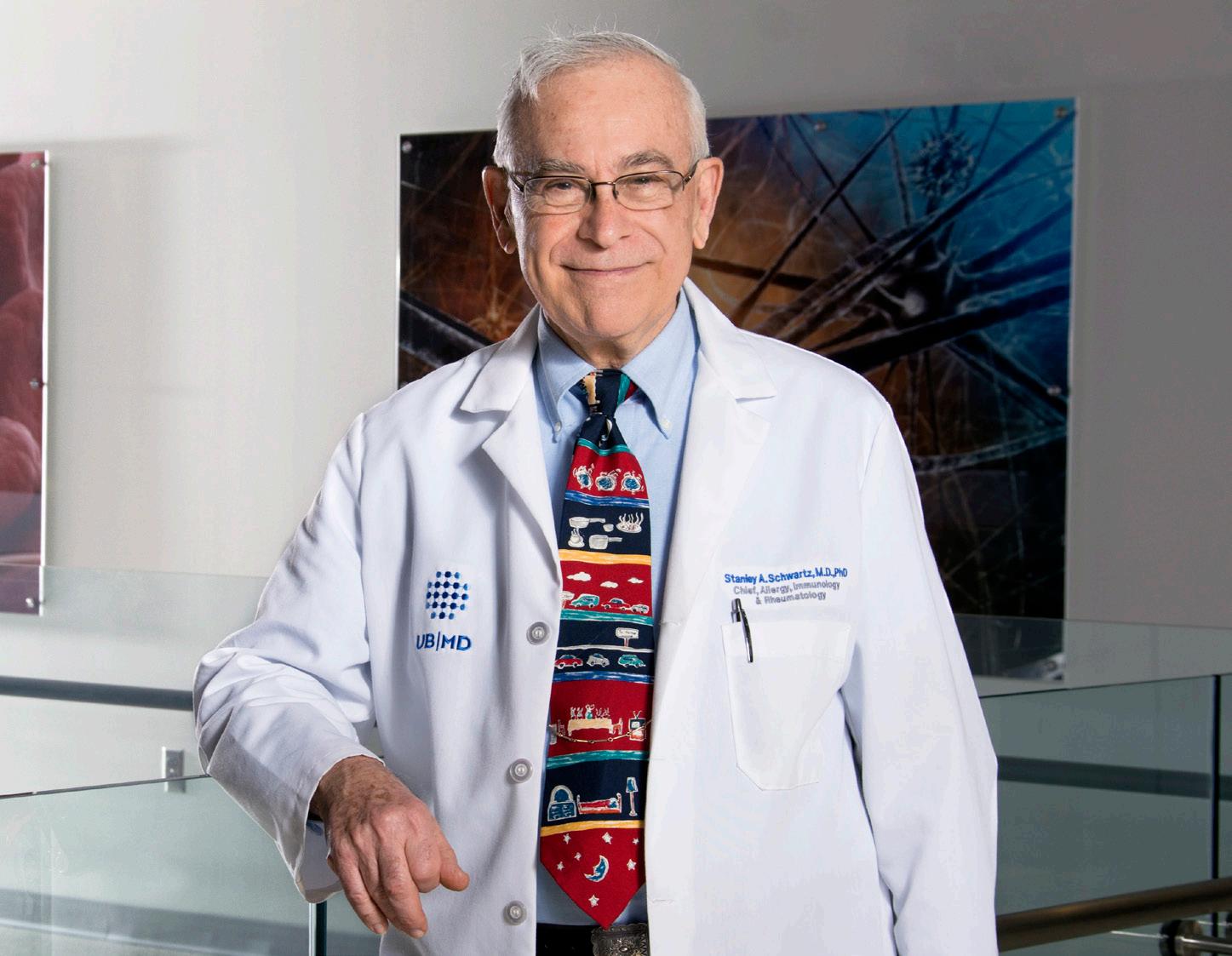
“The process of oral therapy and administering a small amount of the allergic food under their tongue or giving a gradual dose that would not cause a reaction has been success ful. The small amount increased in a safe setting over periods of months can slowly reverse a person’s aller gy to certain foods,” he said. “It has been remarkable the difference we have seen.”
Nevertheless, THC, which is the main psychoactive sub stance in cannabis, can cross the placenta and potentially affect brain development, accord ing to past research on cannabis use in pregnancy.
About 3% of pregnant wom en used cannabis in 2002, but that grew to 7% in 2017. Those numbers were 4.7% in 2018 and 5.4% in 2019, according to the National Survey on Drug Use and Health.
The study was supported by the U.S. National Institute on Drug Abuse (NIDA) and was published Sept. 12 in JAMA Pediatrics.
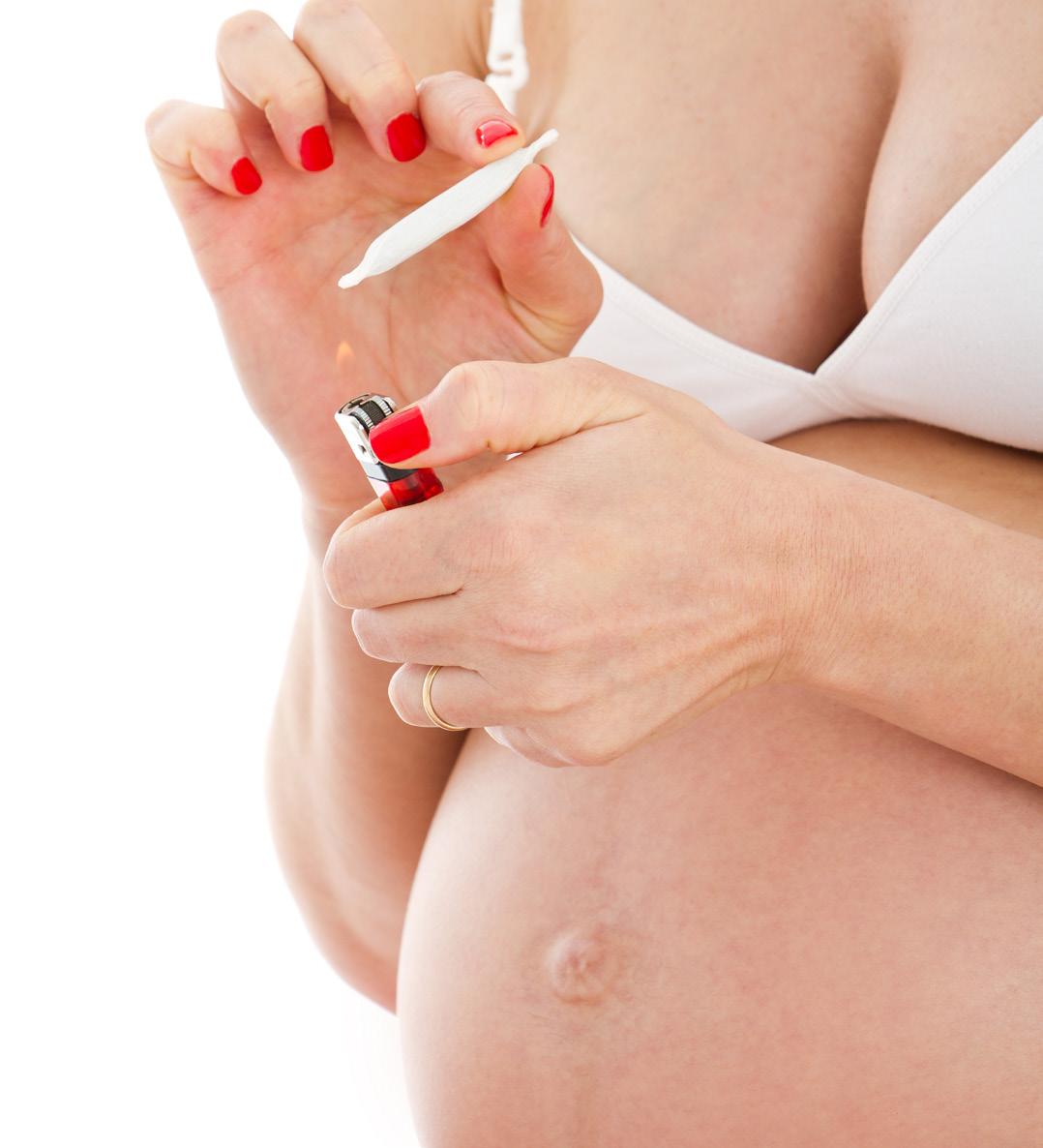
During the pandemic, Peloton exploded in popularity as homebound people explored ways to get fit and stay active during quarantine and beyond.
The exercise equipment man ufacturer makes not only exercise bikes but also programs to keep users moving and motivated.
The combination of equipment and programming proved so suc cessful during the pandemic that the company struggled to keep up with demand.
But does Peloton live up to the hype?
For around $2,500, the Peloton bike comes with a rotating screen so that users can participate in cycling on the stationary bike and in non-bik ing classes. Peloton also makes a treadmill (costing around $3,500) and a rowing machine (around $3,100). In addition to the equipment, users can sign up for a separate member ship for $44 a month to access all the Peloton programming, accessible to the entire household.

A convenient workout at home avoids the hassles of traffic and limited gym hours. There’s no in timidation of working out with fitter people. But does Peloton deliver results?
“With any workout program, consistency is going to be key, not matter what you’re trying to do,” said Noah Basehart certified personal
trainer and general manager at Nex Gen Fitness and Recovery in Buffalo. “The Peloton is interesting because it does offer some engaging workout. You get to ride in a live class with an instructor. There’s a competitive element.”

Tuning into a live session can offer real-time feedback and account ability. Or users can select pre-re corded sessions. The programming includes classes in yoga, stretching, walk, running and resistance.
“There are workouts that go beyond biking, but you have to buy the equipment and the subscription,” Basehart said. “There’s nothing in-person. There’s no one there spot ting you and watching your form. It’s all virtual. If you’re doing some thing that’s more high-risk, it’s really important to know you’re doing it correctly. You can get an engaging workout in, but there’s no one there to make sure you’re doing it correct ly.”
Another layer of anonymity may provide a protective buffer, but it also forces users to rely solely upon themselves to feel motivated to par ticipate and to participate fully once involved. There’s no one to check in on them if they do not show up or to monitor form and progress as they participate. They can skimp on repetitions or sets.
Chad Pozantidis, manager Ter rie’s Boxing Club in Buffalo, believes
According to the American Heart Association, nine out of 10 Americans consume too much sodium each day: 3,400 mg. on average, instead of the maximum 1,500 mg. recommended by the AHA.
Although the body needs some sodium to remain healthy, the AHA states that too much can cause myri ad problems: enlarged heart muscle, headaches, kidney disease, osteopo rosis, stroke, heart failure, high blood pressure, kidney stones and stomach cancer. In the average American’s diet, more than 14% of sodium occurs in foods naturally. About 11% is add ed while cooking or eating and 70% comes from processed and restaurant foods.
“Look on the label to find ‘no salt’ or ‘very low sodium,’” said Sa mantha Paolini, registered dietitian, clinical dietitian and diabetes educa tor in the division of endocrinology and diabetes at UBMD Pediatrics. “Be more wary. Just because it says “lower sodium’ or ‘reduced sodium’ doesn’t mean it has little sodium.”
Menus and food labels can be tricky at times. Claims such as “reduced sodium” or “lower sodi
um” do not necessarily mean that a prepared food is low in sodium. It’s just reduced from the normally high amount of sodium it ordinari ly contains. The key is finding out how many milligrams of sodium the food contains and monitoring intake across the day.
Look at the Nutrition Facts label. Anything lower than 5% is fine, but Paolini said to be cautious about serving size and how many servings for anything 20% or higher.
“Should we all eat a sleeve of sal tines?” she said. “No, but if we have a serving, we should not overeat on our sodium.”
Mary Jo Parker, registered dieti tian in private practice in Williams ville, warns clients about canned and processed, packaged foods.
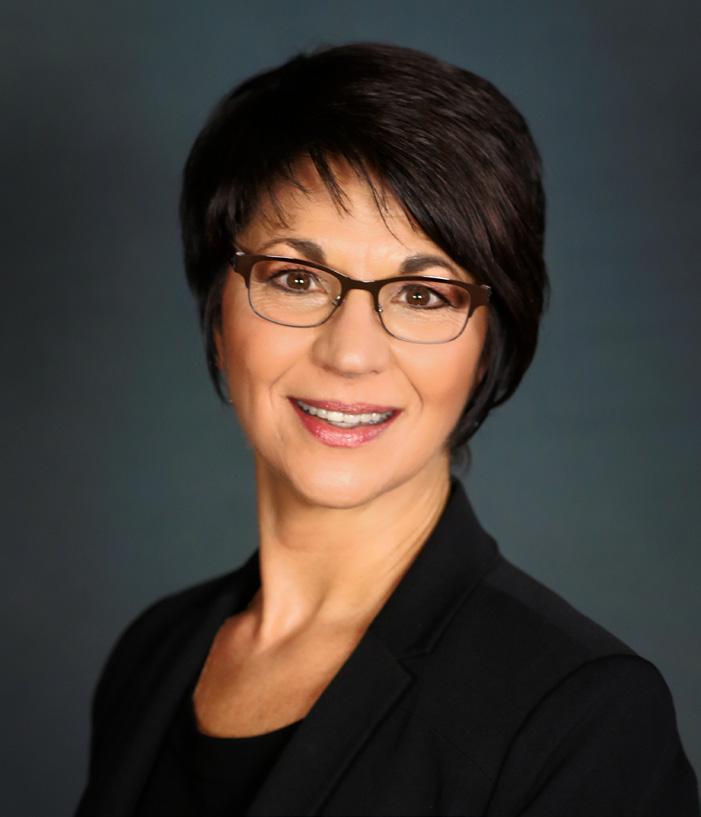
“These tend to be the most com mon sources, along with foods eaten out,” she said. “Pickled and smoked foods are also very high in salt.”
Rinsing canned beans and veg etables can help reduce the sodium. Fresh and frozen produce and dried beans contain no added sodium.
“Eating out also contributes to a higher sodium diet, as most
that doing something is better than nothing, but “the only problem I’d see is there’s no one there to help you in case your form is incorrect,” he said. “No one is there to say when you’re on a different position on the bike, it’s not correct. People need to make sure they’re doing movements correctly.”
His wife uses Peloton when working out at home.
“It is convenient and you have a lot of different choices,” he said. “The app has a lot of different exercises on it.”
Peloton offers a rental option and month-by-month program option.
restaurant fare is highly seasoned to enhance flavor,” Parker said. “Fast foods are often the worst culprits, but fine restaurants have been known to season heavily as well.”
Ask for no added salt when dining out and, if desired, sprinkle a small dash at the table so you can control how much is added. Ask about takeaway food at the grocery store. Many of these items are as bad as restaurant foods for sodium content.
Instead of buying salted nuts from the snack aisle, shop for nuts in the baking aisle, where they are sold unsalted.
Parker turns to herbs and spices for seasoning foods instead of salt.
Justine Anna Hays, lead nutri tionist for Cornell, looks for low-so dium condiments and sauces and cooks at home.

“Most prepared, fast food, or packaged meals are loaded with extra sodium or salt,” Hays said. “Cooking some or all your meals can help reduce that added sodium. Try salting food minimally or just at the end of the cooking process.”
Buying fresh or frozen vegetables that have no added sauces reduces sodium. Like Parker, she adds herbs and spices. But beware of seasoning packets, as these are often loaded with salt.
For all of sodium’s ills, a small amount of it is needed for good health. Consulting with a healthcare provider can help assess what level of sodium is right for an individual to maintain good health.
Every early November, my fam ily has the most absurd conver sation. We talk about Thanks giving sides as if they were open for discussion. Who are we trying to kid? Like most Americans, we would never switch up our cherished favor ites—our beloved stuffing, mashed potatoes and green bean casserole. Thanksgiving is about peace and togetherness, after all, not acrimony and war!
Green bean casserole is our favorite and that’s because, of all the sides, the nutritional chops of green beans somehow justify all those tempting seconds and thirds.
Green beans pack a decent fiber punch, delivering about a fifth of our daily needs in one cooked cup. Fiber promotes regularity, ferries bad cho lesterol out of our bodies and helps to stabilize blood sugars. What’s more, multiple studies suggest that increasing fiber reduces our risk of dying from heart disease, cancer, stroke and diabetes.
On the vitamin front, this tasty legume provides admirable amounts of vitamins K, C, A and folate. While vitamin K helps blood clot prop erly and maintain strong, healthy bones, vitamins C and A pro mote healthy immune systems, which is especially
important during flu and cold sea son. Folate, a critical B vitamin that prevents birth defects in newborns, also contributes to heart health by lowering an amino acid that can lead to hardening of the arteries.
Green beans are a good source of minerals, especially manganese. This essential mineral supports bone health, promotes wound healing, and has antioxidant abilities, much like vitamins C and A, that protect our bodies from disease and acceler ated aging by neutralizing toxic free radicals.
A versatile bean that can be eaten raw or cooked, green beans are natu rally low in fat, sodium, cholesterol, and calories: only 44 per cooked cup.

What’s more, fiber-rich beans take longer to digest, which helps us feel full longer, snack less, and may be, just maybe, reach for only two helpings this Thanksgiving instead of three!
Adapted from slenderkitchen.com
2 pounds fresh green beans
2 tablespoons butter, divided
1 cup shallots or onions, thinly sliced
½ cup whole-wheat panko bread crumbs

¼ cup sliced almonds
1 pound mushrooms, sliced 3 garlic cloves, minced
2 tablespoons white whole-wheat flour
2 cups reduced-fat milk
2 vegetable bouillon cubes (or chicken)
1 teaspoon dried thyme ½ cup grated Parmesan cheese (optional)
Salt and pepper to taste
Preheat oven to 400 F.
Bring a large pot of water to a boil. Add the green beans and cook 3-4 minutes until bright green and tender crisp. Immediately add to an ice bath to stop the cooking. Strain and dry.
Melt 1 tablespoon of butter in a pan over medium heat. Add the shallots or onions and cook 5-7 min utes until tender. Transfer to a small bowl. Add the breadcrumbs to the
Purchase fresh when possible. Look for firm beans that are bright green and free of black spots. Fresh green beans should be refrigerated in a plastic bag and eaten within a week or less, since they lose their fresh flavor quickly. Since cooking green beans may cause a reduction in some nutrients, such as vitamin C, cook them for the least amount of time necessary, whether boiling, steaming, sautéing or roasting. Steaming beans is better than boil ing, since it uses less water and pre vents the beans from overcooking.
pan, toast for 1-2 minutes until light brown, and transfer to the cooked onions. Stir in the sliced almonds. Set aside.
Wipe out the pan with a paper towel. Add the remaining tablespoon of butter. Once melted, add the mushrooms and cook 6-8 minutes until tender. Add the garlic and cook 1 minute more. Add the flour, along with a splash of water, and stir well. Cook for 1 minute. Add the milk and bouillon cubes. Bring to a simmer and cook for 6-8 minutes, stirring often, until thick and creamy. Turn off the heat and stir in the thyme and Parmesan cheese (if using). Season with salt and pepper to taste.
Lightly oil a 9 by 13 inch baking pan. Add the green beans and mush room gravy, Stir to combine. Top with the onion mixture.
Bake for 20-25 minutes until browned and bubbly.
Anne Palumbo is a lifestyle colum nist, food guru, and seasoned cook, who has perfected the art of preparing nutritious, calorie-conscious dishes. She is hungry for your questions and comments about SmartBites, so be in touch with Anne at avpalumbo@aol.com.
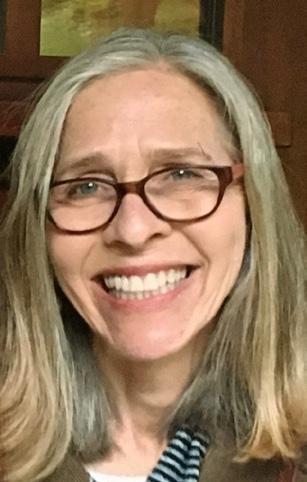
drink two or three
daily appear to live longer than people who don’t care for the beverage, new research shows.
of
Coffee lovers also seemed to have healthier hearts, which might contribute to the longevity boost, said the team of Australian investi gators.

The findings were published Sept. 27 in the European Journal of Preventive Cardiology.
“Ground, instant and decaffein ated coffee were associated with equivalent reductions in the inci dence of cardiovascular disease and death from cardiovascular disease or any cause,” study author physi cian Peter Kistler, of the Baker Heart and Diabetes Research Institute in Melbourne, said in a journal news release.
While other studies have sug gested that the coffee habit might be a healthy one, Kistler’s team said there’s not been much investigation into the health effects of various forms of coffee.
To try to find out, they analyzed data from the ongoing UK Biobank database, looking at data on people aged 40 to 69. In this study, the av erage age was 58 and the Australian researchers focused on levels of daily coffee intake and life span, as well as heart disease, heart failure and stroke.
Overall, data on almost 450,000 Britons was included in the research. Regarding daily coffee intake, partic ipants were divided into six groups: No coffee; less than a cup a day; one cup per day; two to three cups per day; four to five cups per day; and over five cups per day.
Speech language pathologists do far more than teach preschoolers how to say the letter “r.” They assist with all sorts of health issues and work in many different settings with patients across the lifespan.
Regardless of where and with whom they work, speech language pathologists help patients. That is what drew UB graduate Suzanne Johnston to the profession. Now working at Speech and Communica tion Services in Rochester, Johnston felt as a high school student that helping others would be part of her career. At first, she thought it would be working with people who are deaf and hard of hearing. The more she learned about speech language pathology, the more she realized that was the role she desired.
After completing her master’s degree at UB, she finished a year of fellowship under a certified speech language pathologist before receiving
her own certification and licensure in 1984.
“You have to be a good commu nicator, have a good command of the language they’re practicing in, and to like working with people,” Johnston said. “I’ve met some people who midway decided they didn’t like working with people.
“I think they need to have ques tioning minds and be good diagnos ticians and resourceful.”
Oftentimes, speech language pathologists may be the only one in their profession in their community, or only one of a handful of practi tioners in their hospital. Staying in touch with others in the profession can help reduce risk of isolation.
As she works in private prac tice—not a healthcare, long-term care or school setting—Johnston sees a variety of patients from toddlers to adults. She focuses on speech issues such as articulation, fluency, stutter
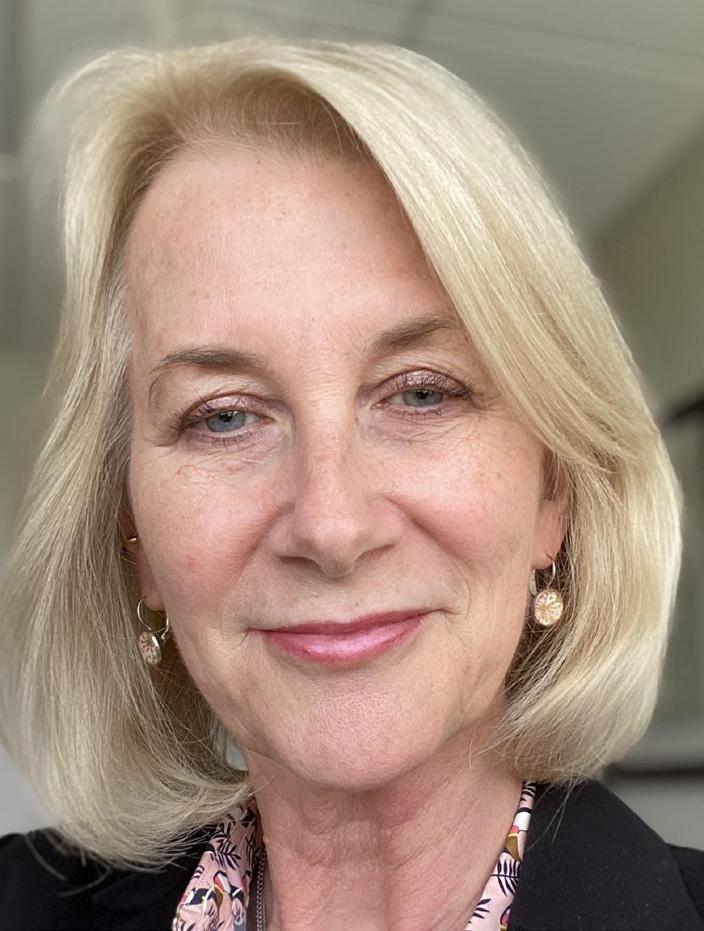
 By Deborah Jeanne Sergeant
By Deborah Jeanne Sergeant
Macular degeneration is one of the nation’s leading causes of blindness and low vision, affecting 1.8 million Americans, according to the Centers for Disease Control and Prevention.
Age-related macular degenera tion or “dry” macular degeneration is more commonplace, 70%-90% of cas es, than wet macular degeneration.

Either type of macular degenera tion affects the central vision, which is important for reading, filling out paperwork and driving. Patients may see fine in their peripheral vision, but not in the center. For example, they may see a person’s clothing and hair, but not the face.
WMD occurs when blood vessels grow abnormally under the macular and leak blood and fluid. This vision loss is rapid, and typically presents with straight lines appearing wavy. AMD is a slower process as the macula thins, which eventually blurs vision. Patients have a 10% chance of progressing into WMD.





Although there is no cure for AMD, doctors can treat WMD to reduce its effects with anti-VEGF injections to decrease the bleeding in the back of the eye and photodynam ic therapy, a less common treatment sometimes used with anti-VEGF injections.


The injections “are generally
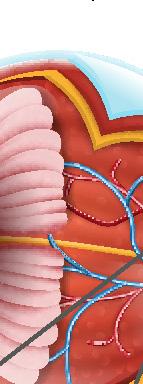

very effective,” said Luca Zatreanu, ophthalmologist with Reed Eye As sociates in Pittsford and Irondequoit. Reed Eye also operates an office in Newark.
“Patients need to realize that these are treatments, not cures.”
They will need to return to the office for injections to prevent further damage. Even a week’s delay can negatively affect vision. With effective treatment, WMD can be managed for years—even decades— thanks to current protocols with a much lower risk of losing vision.
Photodynamic therapy uses a cold laser to target a light sensitive medication in the eye to break down blood vessels that cause the vision loss. Patients may need repeated treatments to maintain the effect.

Zatreanu tells adult children of someone with macular degeneration to regularly undergo a dilated eye exam of the back of the eye “even if they don’t have problems with their vision,” he said.
He also advises patients in lifestyle modifications for those with macular degeneration that can reduce their risk for further vision loss, including avoiding exposure to smoking and other sources of carbon monoxide, such as a woodburning stove.
“That can potentially accelerate
ing disorders, cognitive disorders or progressive neurological issues, motor speech challenges and, as her specialty, aphasia. In the medical setting, speech language pathologists may help patients with swallowing disorders, hearing disorders and voice therapy.
Anyone interested in becoming a speech language pathologist should try shadowing one in the desired setting such as a school, nursing home or hospital or perhaps audit ing a class to learn more about the profession.
“One of the things I did when I was figuring out what I wanted to do is I volunteered my time,” John ston said. “This day and age it’s not as possible. But if you can volunteer in clinics or in settings where you can work with people, that’s great. You can figure out if this is what you want to get into.”
As with any health or helping profession, burnout presents a big challenge. Talking with colleagues, joining a professional organization and taking time for self-care helps.
While the profession has little room for advancement, some larg er healthcare facilities may have a senior or managerial role for a speech language pathologist.
Johnston considers her solo prac tice as the ultimate advancement.
“In private practice, I do what I want,” she said. “That’s hard to do right out of school. You need a broad range of experiences and expertise.
This is another way you can move up.”
She finds her role as a speech language pathologist very fulfilling.
“I feel like one of the very im portant things I offer people is hope,” Johnston said. “People who come to me are in need of something. If I can offer them the means to do that and hope for the future, that to me is a really valuable role.”
The annual mean wage of speech language pathologists in Buffalo is $76,980.
the condition,” he said. “If you’re outdoors, even in winter, put on sunglasses as UV exposure can accel erate.”

Supplements can also help, in cluding brands such as Preservision and Ocuvite.
Early diagnosis can help patients make lifestyle changes that can slow macular degeneration progress. In addition to smoking, the greatest risk factors for macular degeneration include age, family history, gender (women are more prone), high blood pressure, high cholesterol and poor diet.
Mary Jo Parker, registered dieti tian nutritionist in private practice in Williamsville, recommends im proving the diet by including more healthful foods to prevent further degradation for eye health and in general to promote eye health and reduce the risk of eye issues. She recommends improving intake of
vitamins C and E. Phytochemicals lu tein and zeaxanthin can also promote eye health.
“It’s been studied pretty exten sively,” Parker said. “The recommen dations now are dark green leafy vegetables and other dark green vegetables like broccoli and peppers, red and orange, and citrus can help.
“Eat a plant-based diet with healthful oils and fatty fish two to three times a week as well. Age relat ed eye disease studies provided good results saying people will do better if they eat more like a traditional Mediterranean diet and avoid foods high in sugars, refined starches and alcohol.”
Nuts are good sources of health ful fats. For people watching their sodium intake, shopping for walnuts in the baking aisle can make it easy to avoid added salt since these nuts are typically sold plain.
Helping those in need is ‘very fulfilling.’ Annual mean wage of speech language pathologists in Buffalo is $76,980Suzanne Johnston an UB graduate who now works at Speech and Communication Services in Rochester.
Aging brings its own rewards— wisdom, experience and sense of accomplishment—along with a few challenges. With planning and a few community resources, older adults can mitigate the effects of these challenges as they age.
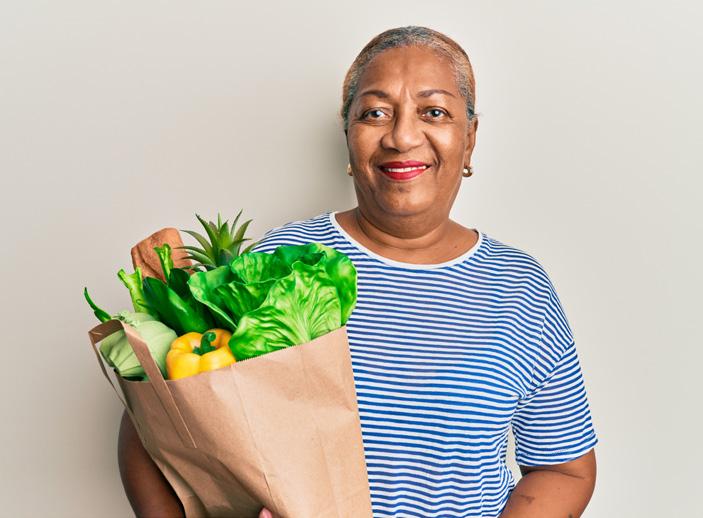
fects and better management overall. A simpler regimen means less risk of confusion about medication.”
Consulting with a pharmacist or primary care provider can help reduce unnecessary and outdated prescriptions.
By Deborah Jeanne SergeantJustine Hays, registered dietitian and senior Snap-Ed nutritionist for Cornell Cooperative Extension Niag ara County in Lockport, recommends slow cooking cheaper, tougher cuts of meat as “it makes meat more tender and flavorful. Eggs are also a good, inexpensive source of nutri ents. They’re so easy to fix and eat.”
Legumes, nut butters, canned fish and canned chicken are also good, inexpensive sources of nutri ents.
Losing muscle is not merely a vanity issue. It can contribute to falls and frailty. It begins gradually in middle adulthood but can occur more rapidly if an older adult has been laid up because of sickness or injury. To prevent falls, it is import ant to maintain muscle tone through resistance activity and bodyweight exercise, as well as engaging in activ ities that challenge balance. Activities such as walking, yoga, lifting weights and swimming can help.

“I’ve been seeing falls,” said Francine Intorre, adult-gerontology nurse practitioner program co-coor dinator and clinical assistant profes sor at UB. “There’s always a risk for a host of reasons.”
She wants more people to seek support in their homes such as a home and personal assessment by a physical therapist and installation of any helpful equipment like grab bars. Unfortunately, health insurance typically covers interventions only after an incident.
“What I’ve been seeing a lot is still isolation,” Intorre said regarding the pandemic. “A lot have experi enced a death of people younger than them and their peers. It’s a little disheartening when everyone else has passed on.”
She wants the medical commu nity to not only take care of seniors’ physical health but also their emo tional health as “it’s a big part of quality of life.”
Drinking enough fluids is vital to good health—and that does not nec essarily mean chugging eight glasses that are 8 ounces each. The current rule is drinking half the body weight in ounces daily, such as a 150-pound man would drink 75 ounces each day.

“Sometimes I suggest if I’m worried about electrolytes, G-2 or Gatorade unless the person is diabet ic,” said Mary Jo Parker, registered dietitian and clinical nutritionist in private practice in Williamsville. “I’ll remind them there’s high water con tent in fruits and lighter vegetables and things like broths and soups.”
Hays encourages older adults and their families to look into con gregant meal sites, grab-and-go meal boxes, Meals on Wheels, food and meal kit delivery services and other resources listed on the Erie County Department of Senior Services site, www3.erie.gov/seniorservices. The NY Connects program at 716858-8526 can also offer tips on area supports.
According to Georgetown University Health Policy Institute, people aged 50 to 64 take an average of 13 prescription medications. That shoots up to 22 by age 80.
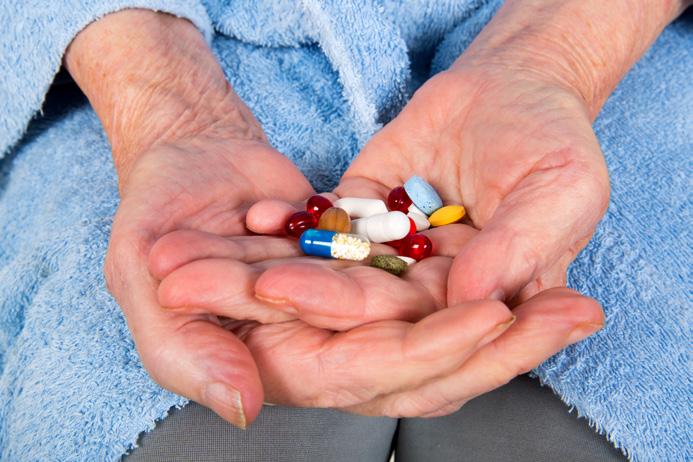
Some of these medications may be attributed to polypharmacy: taking unnecessary mediation. Poly pharmacy causes unnecessary side effects and expenses to patients.
“I’ve seen providers trying to re duce the medication they put people on,” Intorre. “It helps prevent side ef
Decades ago, the family doctor took care of nearly every health need. However, in today’s specialized medicine, many seniors see a differ ent specialist for each condition and bodily function.
“That does take a toll to see so many specialists for chronic condi tions,” Intorre said. “They’re fatigued with having five or more specialists such as diabetes, a skin condition, neurologic issues like dizziness.”
Multiple doctor-patient relation ships can also mean that information does not always transfer with elec tronic medical records if physicians belong to different medical systems.
Poor eating in older adults can happen for a variety of reasons. It is important to maintain a balanced, varied diet because “most of the things they have health concerns about — cognitive decline, osteopo rosis and chronic pain — all of those can be positively affected by proper diet,” Parker said. “It can and will make a difference if they’re eating more plant-based, traditional Medi terranean type of diet.”
She added that food insecurity can contribute to nutritional deficien cies, as accessible, inexpensive food is often less healthful. Stocking up on healthful frozen and shelf-stable foods can also help, such as ready-tosteam microwavable vegetables and nut butter.
“Protein and vitamin D sources are ones many older adults are low on,” Parker said. “Or if they don’t eat much meat, they may not have enough zinc or perhaps copper or B6 or B12 if they don’t get enough animal products.”
Meat can be challenging for some older adults to afford and in some cases, challenging to chew.
“Follow medical advice for recommended screenings for can cer, Type 2 diabetes and high blood pressure,” said Kara Kane, public information officer for Erie County Public Health.

Vaccines are not just for infants and children. Kane said that older adults also need them as directed by their healthcare providers. These in clude periodic COVID-19 and annual influenza.
“COVID-19 and flu are responsi ble for thousands of hospitalizations among older adults and the risks for moderate and severe illness are high er for older adults,” Kane said.
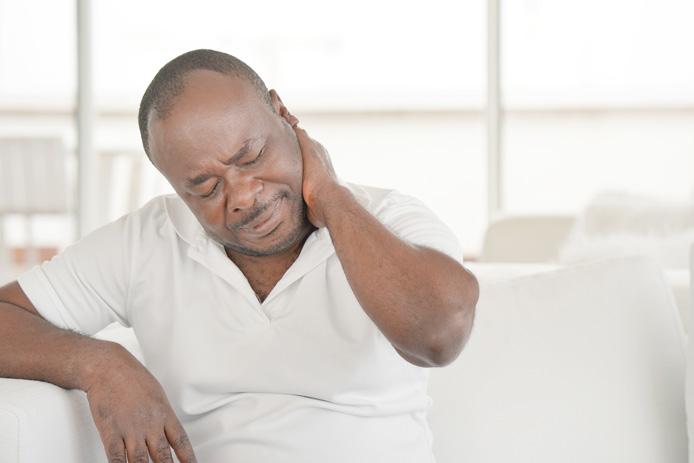
Some older adults may benefit from pneumonia vaccine.

Erie County commissioner of senior services: ‘Our senior services are not what people think. They’re fun and awesome’
By Brenda AlesiiMakeno mistake: the Univer sity Express is not the latest fast-moving train that will quickly take you to your destination. It is instead a free program offered by the department of Erie County Senior Services, featuring a variety of topics offered both virtually and in person throughout Erie County. Older adults are classified as 60-plus years, while
some federal programs deem the age as 55-plus.
The University Express pro grams, lasting 45 minutes to an hour, include law, finance, current events, history, the humanities, science and wellness and personal enrichment, to name a few.
Amherst resident Angela Mari nucci is the Erie County commission
It definitely pays to know what charges to expect when pre-plan ning a funeral. Most people don’t have a clue and can often be upsold thousands of dollars’ worth of extra services they may not want or need.
Here’s a breakdown of what you can expect.
The first thing you need to be aware of is that funeral costs will vary considerably depending on your geographic location, the funeral home you choose and the funeral choices you make. With that said, here’s a breakdown of what an average funeral costs, nationwide, according to the most recent data from the National Funeral Directors Association.
• Professional services fee: This is a basic non-declinable fee that covers the funeral provider’s time, expertise
and overhead: $2,300.
• Transfer of the remains: This is for picking up the body and taking it to the funeral home: $350
• Embalming and body preparation: Embalming is usually mandatory for open-casket viewing, otherwise it’s not required unless the body is going to be transported across state lines. Embalming costs $775. Other body preparations, which includes hair dressing and cosmetics runs $275.
• Funeral viewing and ceremony: If the viewing and funeral ceremo ny is at the funeral home, you’ll be charged for use of the chapel and any necessary staff. Costs: $450 for view ing, and $515 for funeral ceremony.
• Metal casket: This is a big money maker for funeral homes, with mark ups of up to 300 percent over the wholesale price: $2,500.
er of senior services. In her post since March of this year, Marinucci, a grad uate of American University Law School, is a passionate advocate for all the programs under her purview.
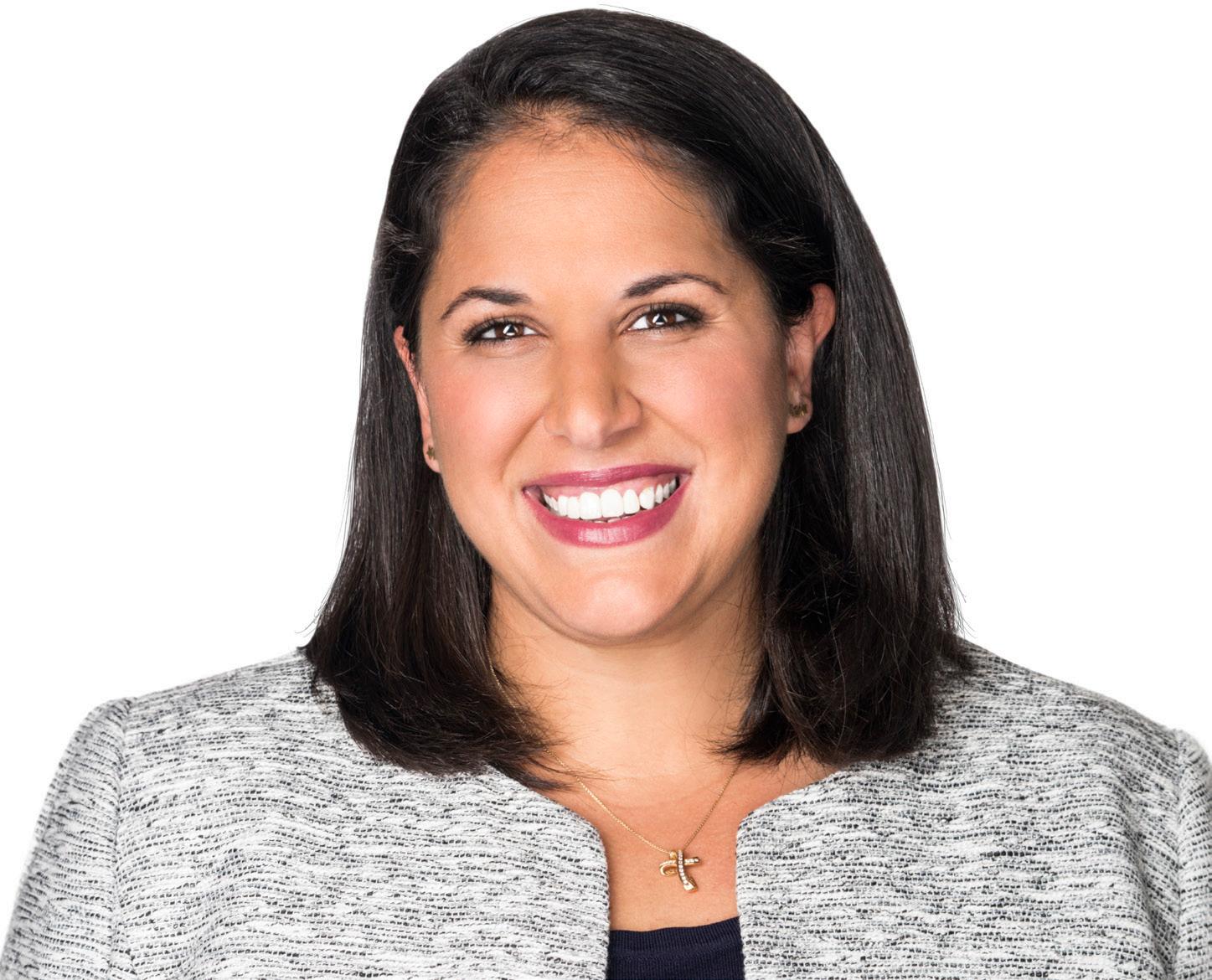
Q. The mission of your department is to promote the well-being of all older adults through coordinated and costeffective services, which enhance the independence, dignity and quality of life. What sort of feedback have you received from people who have attended University Express programs?
A. People love it. I know of a gentleman who signed up for 20 classes.
One of the more popular topics is fantasy football. A group attend ing that program formed the Akron Senior Mafia; they enjoy talking football and socializing around a common interest.
Our University Express is the best kept secret in Erie County, but seniors who have discovered it are taking advantage of the incredibly robust programs. Since its inception in 2014, we’ve grown every semes ter and more people are learning about the wide array of topics being offered, all free. There is also no cost to the senior centers.
Q. Have you sampled some programs yourself?
A. Yes. I attended a few, includ ing a fascinating program on the evo lution of dollmaking at the Delavan Grider Community Center. I’m out and about at least two days a week, attending University Express pro grams, visiting senior centers, open houses, farmers markets. I’m lucky to work in an administration that values older adults. I enjoy talking to people who need our services; it is so gratifying to help combat social isolation and keep people healthy and safe.
Q. How do you publicize the University Express?
A. We email information to senior center directors and place
fliers in supermarkets, coffee shops. A wealth of info can be found on our website and on social media, and of course through word-of-mouth.
Q. What else is offered by your department?
A. Other programs include Club 99 — fitness classes held in parks and senior centers. We also work with several centers to provide lunch across the county. This past summer we received a grant that funded a group outing to a Buffalo Bisons game. More than 1,200 older adults attended the game and enjoyed hot dogs, soda and a wonderful summer afternoon in downtown Buffalo. With the cooperation of the Bisons, we arranged for our group to be seated in the shade, another example of a large-scale event in which our seniors felt safe and healthy.
We also have book and trivia clubs. Contrary to what people may think, many people aged 60-plus are internet-savvy. In reality, older adults have been using computers for more than 20 years since the time they were working.
This isn’t like the life portrayed on “The Golden Girls.” Our senior services are not what people think. They’re fun and awesome.
Q. With winter looming, does your department provide help with cold weather needs?
A. The Home Energy Assistance Program (HEAP) is available starting this month; we do outreach around the county. Using grant money, we work in conjunction with FeedMore WNY and Meals on Wheels to pro vide eligible adults with home- deliv ered meals.
Q. How can your office be reached?
A. Our phone number is 716-8588526; website: www.erie.gov/senior services. More info can be found on Facebook and Twitter.
• Funeral transportation: Use of hearse and driver; $325 to transport the body to the cemetery. Use of a service car or van: $150.
• Memorial printed package: This includes printed programs and me morial guest book: $183.
In addition to these costs, there are also a number of cemetery costs like the plot or mausoleum fee, the vault or grave liner that most ceme teries require, and the opening and closing of the grave, all of which can run between $2,000 and $3,000; and the gravestone, which typically runs between $1,000 and $3,000.
You’ll also need to budget for related expenses like flowers for the funeral ($200 to $400), the newspaper obituary fee ($100 to $800 or more), the clergy honorarium ($200 to $300) and extra copies of the death certif icate ($5 to $35 per copy depending on the state).
All told, the average cost of a total U.S. funeral today with view ing and cemetery burial is around $12,000.
If this is more than you’re willing or able to pay, there are ways to save. For starters, you should know that prices can vary significantly by funeral provider, so it’s wise to shop around. If you need some help, there are websites you can turn to like Parting.com that lets you easily compare prices online based on what you want.
When evaluating funeral provid ers, be sure you get an itemized price list of services and products so you can accurately compare and choose what you want.
The most significant way to save is to request a “direct burial” or “di rect cremation.” With these options the loved one would be buried or cremated shortly after death, which skips the embalming and viewing. If you want a memorial service, you can have it at the graveside or at your place of worship without the body. These services usually run between $1,000 and $3,000, not counting cem etery charges.






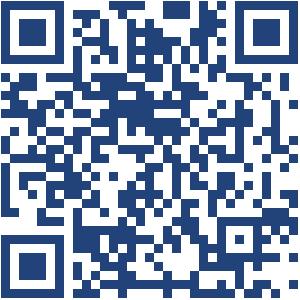
Itcan be hard to talk to your loved ones about moving into assisted living, so don’t push them too hard and make sure they feel safe and comfortable with the idea, one expert advises.
“Start the conversation as early as possible, and focus on what matters,” said Angela Catic. She’s a geriatrician and associate professor in the Roy M. and Phyllis Gough Huffington Center on Aging at Bay lor College of Medicine in Houston.
“Think about if an assisted living environment could not just support, but enrich things that really bring joy to that individual’s life,” Catic said in a college news release.
As people age, it gets harder to take care of a house and yard. Adult children often start talking about assisted living when they see their
parents are struggling, Catic said. After the death of a partner, a person may feel alone and lose their social connections. This is where transition ing into assisted living could benefit an older person, as such facilities often provide various social activities for their residents.

When starting a conversation with a loved one, consider covering these topics:
• Mention a few facilities you have already researched prior to the conversation. Whether you visit them in person or do online research, keeping a few facilities in mind can ease any nervous feelings about the process.
• Present a few options close to your loved one’s home or facilities near the home of a family member. This could remind them that they
won’t be completely alone and will still have access to their family.
• Stay mindful of their feelings, as they could feel anxious or sad about having such a conversation. These emotions may prompt them to resist the move altogether.
• Mention any of their friends that you have heard from or ask them if they know anyone who has already moved into an assisted living facility, to normalize the idea.
• Make sure they feel involved in the process so they feel like they have control over what happens.
• Encourage them to come with you to tour a few facilities so they can visualize what their stay would be like there.
“Find a place they feel good about, too, and bring some of their belongings,” Catic said. “It’s typical ly a major downsizing of space, but it is important to bring things that have meaning to them and make it feel like home as much as possible. This may include items like a favorite chair, items they need to engage in
a favorite hobby or family photo graphs.”
If your loved one says no to the idea of moving to an assisted living facility, don’t keep pushing the idea unless you’re truly worried about their safety. Hospitalization due to an accident or other health issues can also be a good reason to bring up the idea of assisted living again.
If they decline initially, you can always return to the conversation later, as their initial hesitation could be due to other factors that change, Catic said. When bringing the topic up again, ask them if they had time to reconsider the idea. Welcome their thoughts on the subject and offer ways you can make the process more comfortable for them.
Catic advises prioritizing finding your loved one a place that fits their needs and learning as much about it as you can so you know exactly what you are signing them up for. Even if a place looks nice in the lobby or on the tour, finding out more about what they have to offer can be an important part of finding the best fit for your loved one.
Additionally, learn about the staff and how often people move in and out. On another note, some facilities might have connections to different social groups such as veterans or other interesting people with whom your loved one could socialize.
“Go beyond the beautiful, fresh flower bouquet in the lobby because this is going to be someone’s home, not a hotel they’re staying in for a couple of nights,” Catic said. “You’re looking for a feeling of home and fitting in with other residents and a staff that feel like family.”
Many people feel confused when choosing a Medicare plan. The numerous options and industry jargon can make plan selection challenging.
Fortunately, area Medicare experts can help guide those new to Medicare or those changing plans during the current open enrollment period, which ends Dec. 7.
“The number one thing is that the local support,” said Cathy Aqui no, vice president of Medicare Con sumer and Small Group Markets at Independent Health in Buffalo. “Our advisers are there from the beginning of their journey, for those who are new, so we can sit down and look at their medical needs for next year.”
She advises clients to bring their list of their prescriptions and medical providers. They should also con sider discussing their present and future health needs. Beyond the basic Medicare, the additional plans vary depending upon company and type of plan. In addition to medical needs and prescriptions the plans cover, Medicaid subscribers should con sider their comfort level with health conditions. Some want to see their doctor for every twinge; others are more wait-and-see types who seldom want to use their medical coverage.
“People shouldn’t wait until the last minute,” Aquino said. “People can come in early. We want to make sure they’re all set.”
Aquino also looks at whether a policyholder’s doctors will be covered with the plans they consider. Most people want the comfort of con tinuity of care. It is also vital for those who travel to ensure that they will receive coverage for non-emergency healthcare needs away from home.
Typically, HMOs will not cov er routine issues addressed out of network. PPOs may offer some cov erage, making these kinds of plans more suitable for people who travel.
Nancy Nimmo, individual and senior health benefits consultant at Lawley Insurance in Buffalo, looks at travel benefits to ensure that clients can meet non emergency healthcare needs when away from home.

“When you’re going out of the area, you want to make sure you’re covered,” Nimmo said.
She also wants clients to stay in touch in case anything has changed with their prescriptions or provid ers so they can look at the available plans during open enrollment or, if possible, accommodate the changes. She believes that Medicare health planning is so customized that peo ple should avoid companies adver tised on TV and through mailers.
“The plans on ads may not even offered in the service area,” Nimmo said. “Once you call in, they may steer you towards a different plan. Use a trusted adviser to make sure you are enrolling into the right plan.
“I recommend choosing a Medicare plan based on your needs, budget, and your health and making sure your providers participate.”
Insurance plans continually change and upgrade their products and many grandfather in clients with outdated plans. Merely discussing what is new does not place policy holders under obligation to change their plans.
“They often don’t look at what is available,” said Sally Stier president of Clarity Group in Depew, Blas dell, Amherst and Batavia. “Maybe they’re perfectly happy with the plan they have. But there could be something new they’re not aware of.

It’s recommended to take a look at what’s new in their current plan and what else is available. Some people are eligible for financial assistance which can affect what plan will be best for them.”
She added that some veterans use the VA for much of their medical care but sign up for Medicare for certain elements: a strategy that may offer well-rounded coverage.
“We try to look at the person’s in dividual situation,” Stier said. “Even with a husband and wife, they don’t have to have the same plan. They have different health needs. Many people don’t realize that.”
Can you recommend any good online hearing tests? My husband has hearing loss, but I can’t get him to go in and get his hearing checked, so I thought a simple online test could help him recognize he has a problem. What can you tell me?
— Loud Talking LindaThere’s actually a growing number of very good online and app-based hearing tests available that will let your husband check his hearing on his own. These tests are a quick and convenient option for the millions of Americans that have mild to moderate hearing loss but often ignore it, or don’t want to go through the hassle or expense of visiting an audiologist for a hearing exam.
Hearing loss for most people develops gradually over many years of wear and tear, which is the reason many people don’t realize they actu ally have a hearing problem.
Anyone who has difficulty hear ing or understanding what people say, especially in noisier environ ments or over the phone. Or, if you need a higher volume of music or TV than other people, should take a few minutes to test their hearing.

Online and app-based hearing tests can serve as a great screening tool. They are not meant to be a diag nosis, but rather to give you an idea of how bad your hearing loss is and what can be done about it.
For most do-it-yourself hearing tests, you’ll be advised to wear ear headphones or earbuds and sit in a quiet spot.
You also need to know that there are two different types of tests avail able. One type is known as pure-tone testing, where tones are played in de creasing volumes to determine your specific level of hearing loss. And the other type is known as speech-innoise or digits-in-noise (DIN) where you’ll be asked to identify words, numbers, or phrases amid back ground noise.
If your husband uses a smart phone or tablet, two of my favorite app-based hearing tests are the hearWHO app created by the World Health Organization, and the Mimi Hearing Test app. Both apps are free to use and are available through the
HearWHO allows users to check their hearing status and monitor it over time using a DIN test, while Mimi uses pure-tone and masked threshold tests to give you a detailed picture of your hearing abilities.
There are also a wide variety of online hearing tests your husband can take on a computer.
Some top online tests — all offered by hearing aid manufacturers — for speech-in-noise or DIN tests can be accessed at ReSound (resound. com/en-us/online-hearing-test) and Miracle Ear (miracle-ear.com/on line-hearing-test).
And some good online hear ing tests for pure-tone testing are available by Signia (signia.net/en/ service/hearing-test); Ergo (ergo. com/hearing-health/hearing-check); and MD Hearing Aid (mdhearingaid. com/hearing-test).
All of these hearing tests are completely free to use and take less than five minutes to complete.
If the tests indicate your husband has hearing loss, it’s best to think of that as a starting point. He should take results to his doctor or an audi ologist for further evaluation.
Many insurance providers and Medicare Advantage plans cover rou tine hearing exams, however original Medicare does not.
If his hearing loss is mild to moderate, he should look into the new over-the-counter (OTC) hearing aids, which are available this fall online and at retailers like Best Buy, Walgreens and CVS.
OTC hearing aids don’t require a prescription or medical examination for purchase and they’re much more affordable than traditional hearing aids you buy through an audiologist or a licensed hearing instrument specialist.
Send your senior questions to: Savvy Senior, P.O. Box 5443, Norman, OK 73070, or visit SavvySenior. org. Jim Miller is a contributor to the NBC Today show and author of “The Savvy Senior” book.
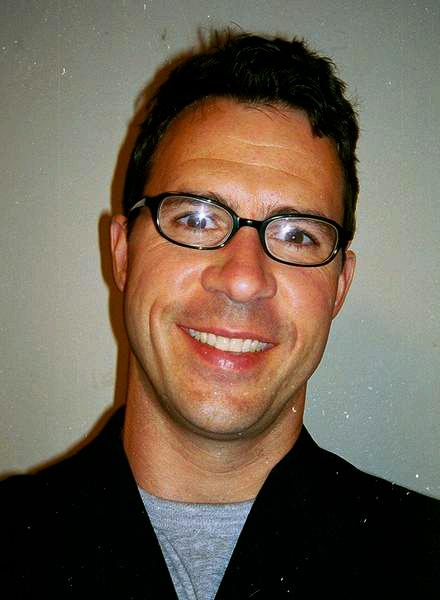

It takes a lot to provide excellence in emergency care. It takes quick and easy access to care, state-of-the-art technology, and most importantly, it takes physicians who have dedicated themselves to achieving excellence every single day. Physicians who have seen it all and know how to handle essentially anything.

That excellence can be found at the Emergency Center at DeGraff Medical Park (formerly DeGraff Memorial Hospital). Our physicians are second to none and combined with our highly-trained nurses and staff, they all share one goal– to provide patients with outstanding medical care. In fact, they’re the same physicians who provide emergency care at Millard Fillmore Suburban Hospital.

Where excellence is.


What is not changing:
If you are eligible at age 65, your initial enrollment period (IEP):

• Begins three months before your 65th birthday.
• Includes the month of your 65th birthday.
• Ends three months after your 65th birthday.
If you are automatically enrolled in Medicare Part B or if you sign up during the first three months of your IEP, your coverage will start the month you’re first eligible. If you sign up the month you turn 65, your coverage will start the first day of the following month. This won’t change with the new rule.
Starting Jan. 1, 2023, your Medi care Part B coverage starts the first
Q.: When a person who has worked and paid Social Security taxes dies, are benefits payable on that person’s record?
A.: Social Security survivors ben efits can be paid to:

• A widow or widower—unre duced benefits at full retirement age, or reduced benefits as early as age 60.
• A disabled widow or widow er—as early as age 50.
• A widow or widower at any age if he or she takes care of the deceased’s child who is under age 16 or disabled, and receiving Social Security benefits.
• Unmarried children under 18 or up to age 19 if they are attending high school full time. Under certain circumstances, benefits can be paid to stepchildren, grandchildren, or adopted children.
• Children at any age who were disabled before age 22 and remain disabled.
• Dependent parents age 62 or older.
Even if you are divorced, you still may qualify for survivors ben efits. For more information, go to www.ssa.gov.
Q.: I plan to retire soon. When are Social Security benefits paid?
A.: Social Security benefits are paid each month. Generally, new re tirees receive their benefits on either the second, third or fourth Wednes day of each month, depending on the day in the month the retiree was born. If you receive benefits as a spouse, your benefit payment date will be determined by your spouse’s birth date.
Here’s a chart showing how your
day of the month after you sign up if you sign up during the last three months of your IEP.
Before this change, if you signed up during the last three months of your IEP, your Medicare Part B coverage started two to three months after you enrolled.
If you don’t sign up for Medicare Part B during your IEP, you have another chance each year during the general enrollment period (GEP). The GEP lasts from Jan. 1 through March 31. Starting Jan. 1, 2023, your cover age starts the first day of the month after you sign up.
You can learn more about these updates on our Medicare webpage at www.ssa.gov/medicare and our Medicare publication at www.ssa. gov/pubs/EN-05-10043.pdf.
Please pass this information along to someone who may need it.
monthly payment date is deter mined:
Day of the Month You Were Born Social
1st-10th
11th-20th
For a calendar showing actual payment dates, see the Schedule of Social Security Benefit Payments at www.ssa.gov/pubs.

Q.: Will my Social Security disability ben efit increase if my condition gets worse or I develop additional health problems?
A.: No. We do not base your Social Security benefit amount on the severity of your disability. The amount you are paid is based on your average lifetime earnings before your disability began. If you go back to work after getting disability bene fits, you may be able to get a higher benefit based on those earnings. In addition, we have incentives that al low you to work temporarily without losing your disability benefits. For more information about disability benefits, read our publications “Dis ability Benefits and Working While Disabled — How We Can Help.” Both are available online at www.ssa. gov/pubs.




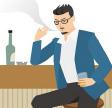 By Deborah Jeanne Sergeant
By Deborah Jeanne Sergeant
from work mean


out?




may seem that way for peo ple whose fitness activities linked to their employment.


Once they are no longer in a workaday routine, it’s easy to let fitness slide.



For example, perhaps they took a morning run before leaving for work. Or maybe they walked with a group of coworkers on their lunch break.

Perhaps the employer offered a fitness center, discount on a gym membership or their health insurance


benefits included a gym membership reimbursement.



When fitness endeavors closely align with employment, it takes plan ning to stay fit as a retiree.
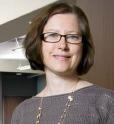


Noah Basehart, certified personal trainer and general manager at Nex Gen Fitness and Recovery in Buffalo, said that other barriers to staying fit can include pain from old inju ries cropping up and fear of further injuries.

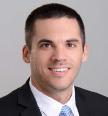




“With pain, there are a lot of fit ness and medical professionals who can recommend movements to match their energy level and function,” Basehart said. “Many modalities can be appropriate like low exertion exercise and flexibility. Appropriate guidance and equipment can greatly reduce injury risk.”

To accommodate a tight budget, he recommends community events, open gym time at a local school or community center, and senior gym memberships. Some gyms accept insurance.

“Even if you can’t afford to go to a gym, there are tons of resources on line to work out at home,” Basehart said. “If you were to go on YouTube and search for bodyweight workout, there are probably tens of thousands.
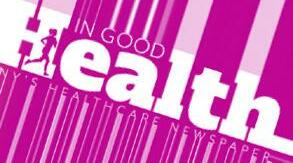





“Go for a walk, put on music and dance in the kitchen. People may be less inclined to leave home in the colder weather. Asking a trainer for a body weight plan to do at home is a good way to stay active.”
Workplace workouts often in volve others. But retiring pares down the social circle. Establishing a new social circle around activity can help people meet those fitness goals.


Joining a fitness group or class can also help keep retirees connect ed and accountable. Many fitness organizations offer lower rates for people 65-plus and provide regimens that can accommodate people with limitations from past injuries. There is no reason a bum knee or painful shoulder should eliminate activity. Community-based walking clubs,
hiking groups or other activity-based groups can help keep retirees mov ing.

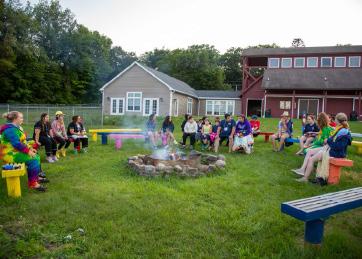

Chad Pozantidis, manager of Terrie’s Boxing Club in Buffalo, encourages retirees to join a club or take fitness-oriented lessons to stay accountable and consistent. Going it alone often results in engaging in activity that is not intense enough and offers minimal results. Going too intense can lead to quitting or, worse, injuries.
“At our facility, we have mul tiple classes throughout the day,” Pozantidis said. “A lot of the daytime classes are well-attended by people who are retired. We offer strength training, Zuma, cardio kickboxing, and all of those are geared towards the older clientele.”
An initial session with a personal trainer is part of the basic gym mem bership, although optional follow-up sessions for an additional fee can help those working out stay in form and on track.

“Finding the right trainer makes a difference,” Pozantidis said. “If the client needs more mobility, special equipment or has arthritis or even if they just want to stay fit and build strength, the key is to get a reason to come here and get on a good pro gram.”
Tina Privitera, certified personal trainer at Achieve Personal Fitness in Buffalo, tells many people that walking “is the number one thing to add to your regimen. I also suggest doing exercise in the morning, so you get it over with. Now with YouTube there’s no shortage of free videos for every age and every level of fitness. Start small and simple but start somewhere.”
She also recommends joining Facebook groups or in-person meet up groups to build accountability. Calling a friend to check in can also improve consistency.

“If someone wants to change, they will find resources in a creative way,” Privitera said. “People are hard on themselves, but any kind of exercise is good. The simple things are sometimes better.”



Eleven days since Hurricane Ian, a brutal, devasting monster storm hit my town in Charlotte County, Florida.





I stride down the sidewalk, dodging the many downed trees and tree limbs, street signs laying in the grass, shingles from a roof, bits and pieces of plastic and metal I can’t even identify.
Every inch of ground is covered with debris; every yard with big stacks of rubble.
Both sides of the sidewalk used to be green with foliage; it was a tropical jungle. I loved walking un der the canopy of the trees.
Now all is brown; bright sun glaring down.
No canopy of trees; no shade. No leaves left on the trees.
Few trees are intact; most have a limb hanging. No stop lights because there is no power. No power in much of the area.
It’s overwhelming and heart breakingly sad, all this destruction.
When the local weather person said “A massive hurricane is headed toward Florida,” I listened. But I’ve lived in Florida 20 years — I’ve often heard there’s a hurricane that may be headed our way. I didn’t get alarmed. Just another Florida day.
The weather people always make a big deal of it and everyone rush es out and buys tons of water and potato chips and toilet paper. Many evacuate. All sit back and watch the approaching hurricane, but it always turns off course or their predictions were wrong. Time and time again.
So why would this be any dif ferent? I thought. Not a big deal. It
won’t come here.
They warned us this is a bigger, more power hurricane. They weren’t sure where it was headed. They always err on the side of caution, get people all riled up and anxious. Well, not me; I wasn’t going to worry.
The day before, they still weren’t sure where this hurricane would make landfall. We were in the cone. Just to be cautious, I grabbed my toothbrush and favorite pillow and went to stay with my daughter and her family nearby.
The entire country knows what happened the next day, over those eight hours, as Ian’s winds strength ened to 155 mph. The storm sucked water from the Gulf to pour down over us, flooding the streets. It was a category 4 storm; the fifth-strongest hurricane to hit the U.S. Ian will go down in history as one of the most violent hurricanes of all time.
The power went out even before the wind and rain came. The house was cave-like dark because of the hurricane shutters on all the win dows. With the flickering Halloween candles, glow-in-the dark spider webs and menacing skulls, it was creepy.
As the wind and rain started, we hunkered down, shared stories and snacks while monitoring Ian’s prog ress on an iPhone. After a few hours, we couldn’t hear each other over the intensifying cacophony of Ian.
This wasn’t supposed to happen. I was so sure I wasn’t in the path of a hurricane. I was so wrong.
Hour after hour, the constant, loud sound of the wind and the pounding rain, punctuated by
loud hits. The hardest part was not knowing what it was like outside the house. We knew it would be bad from all the noise.
Finally, after a long eight hours, it stopped. We ran out the front door and cheered about how happy we were that we were OK and the house was OK. But outside was a mess. A river instead of the street. Our cars, up in the driveway, under water up to their tires. Before Ian, the lots next door and across the street were for ests, packed with trees and vines.
Now all the green was gone; trees lay on the ground, their roots exposed. Limbs all over the ground. The leaves all gone. Just a few brown tangled branches where it had been a tropical green forest. So sad.
A tree had fallen on the neigh bor’s car. Water was half way up his front door, going into his house; it wasn’t up on a beam like ours.
The backyard shed lost its door. Though filled with stuff and very heavy, the shed had been moved off its foundation by the wind. The huge above-ground pool was destroyed, pieces all over the yard.
As the water in the street less ened, I drove back to my apartment. As my complex has a generator, we had power. My daughter still doesn’t have power in her house, 11 days later. Taking cold showers was the worst of it for her. She’s been scrounging food wherever she can— most restaurants and stores aren’t open. So many people poured into to the county, offering food, helping the cleanup and recovery.
Going through those hours under the hurricane was nothing
compared to the aftermath. You’ve seen it on the news. Much of the fo liage is gone. Many roofs, pool cages and lanai screens stripped. All over, everywhere. Businesses aren’t open.
The landscape has changed; without the signs on buildings, the trees and the street signs, it’s hard to find your way around. It’s heart breaking. People wait in line six hours for gas, or drive hours to get what they need.
Authorities don’t know how many lives were lost; at least 120. My heart goes out to those who lost so much more than I did; two of my friends each lost their homes and are living with friends. A third is in a homeless shelter.
Now, I walk down the sidewalk, sending up thanks it wasn’t worse. A red-headed woodpecker hops up on the tree down in front of me, looks up at me. “Thought you were so smart, did you?” I imagine him say ing. “Next time maybe you’ll listen to them.”
Charlotte County will be OK; I know we’ll come back, better than before. We’re strong; we’re deter mined.
Barbara Pierce is a long-time contributing writer with In Good Health— Mohawk Valley edition.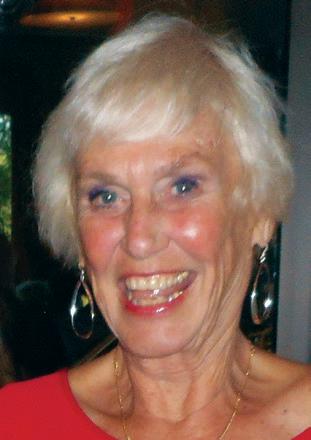
‘They warned us this is a bigger, more powerful hurricane. They weren’t sure where it was headed. They always err on the side of caution, get people all riled up and anxious. Well, not me; I wasn’t going to worry.’